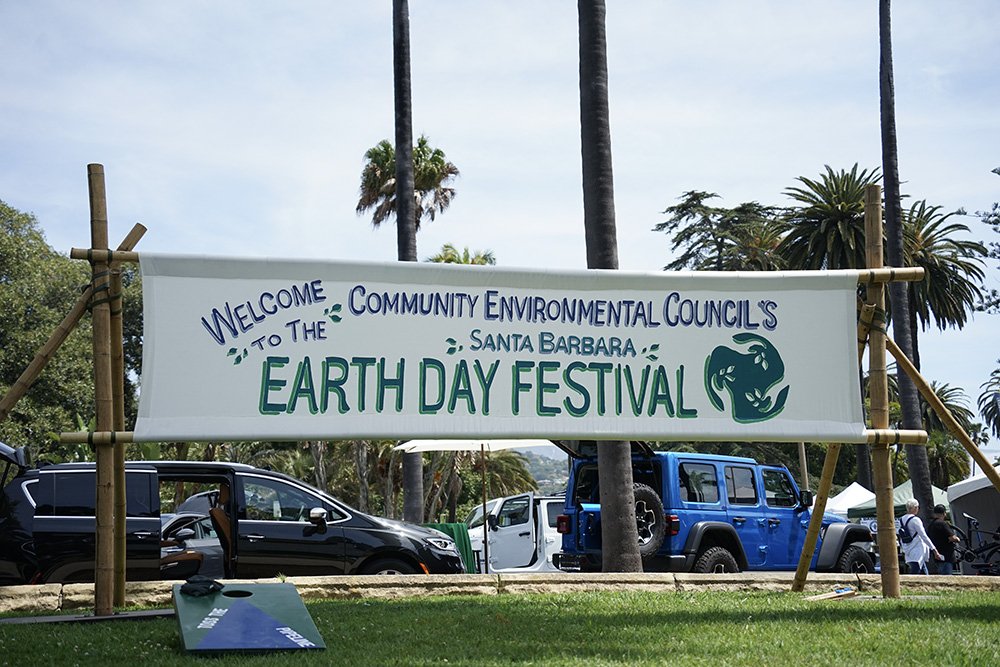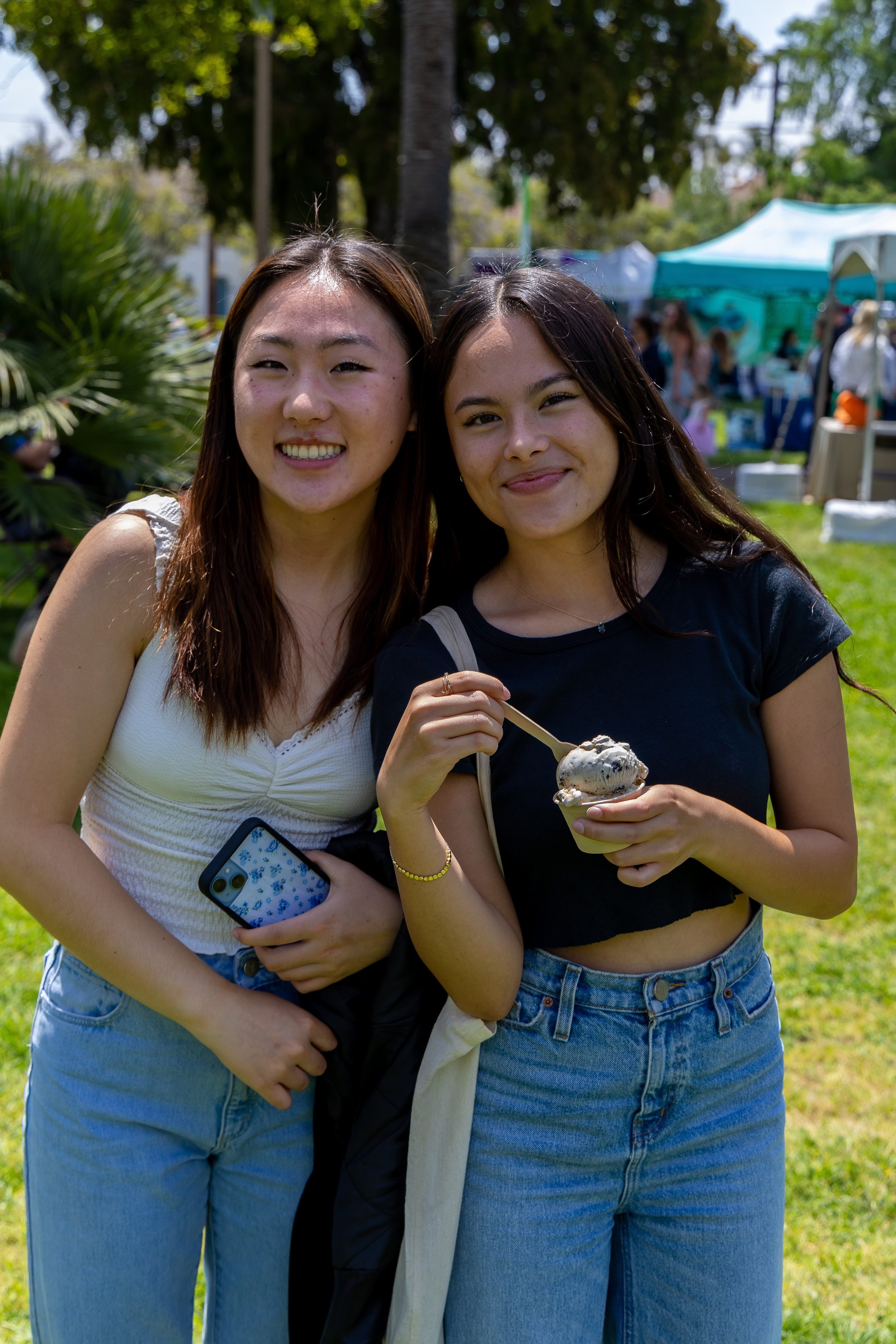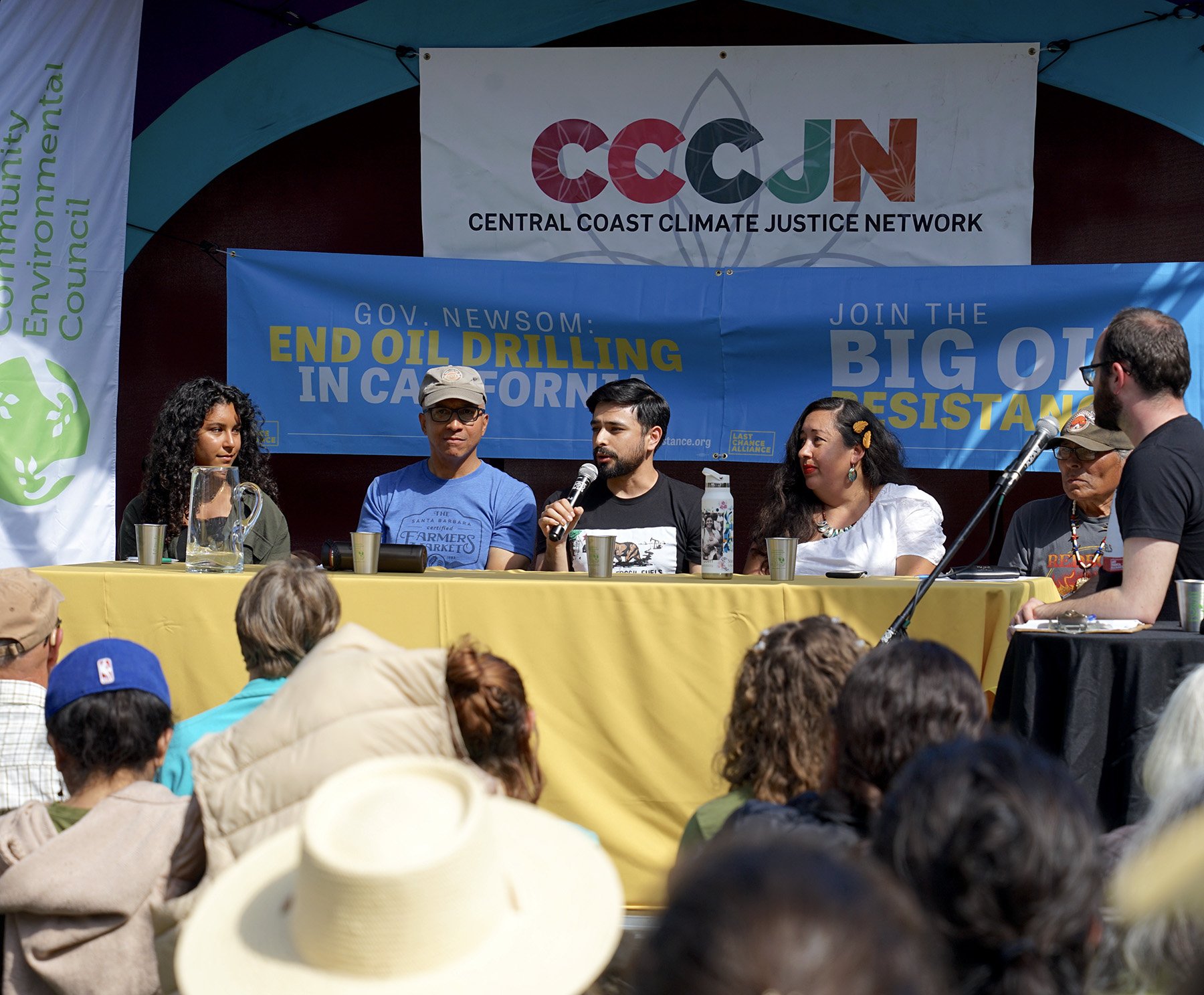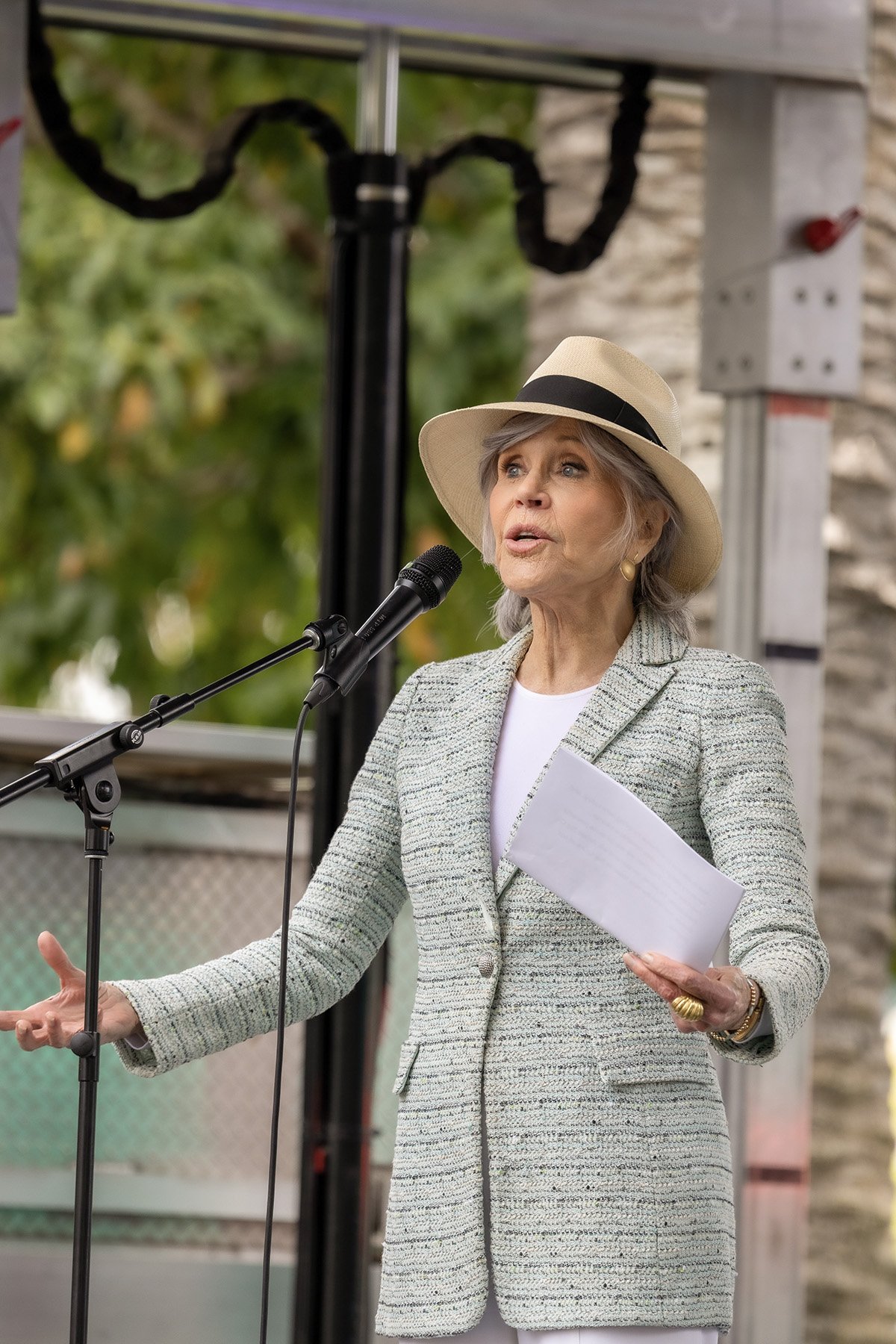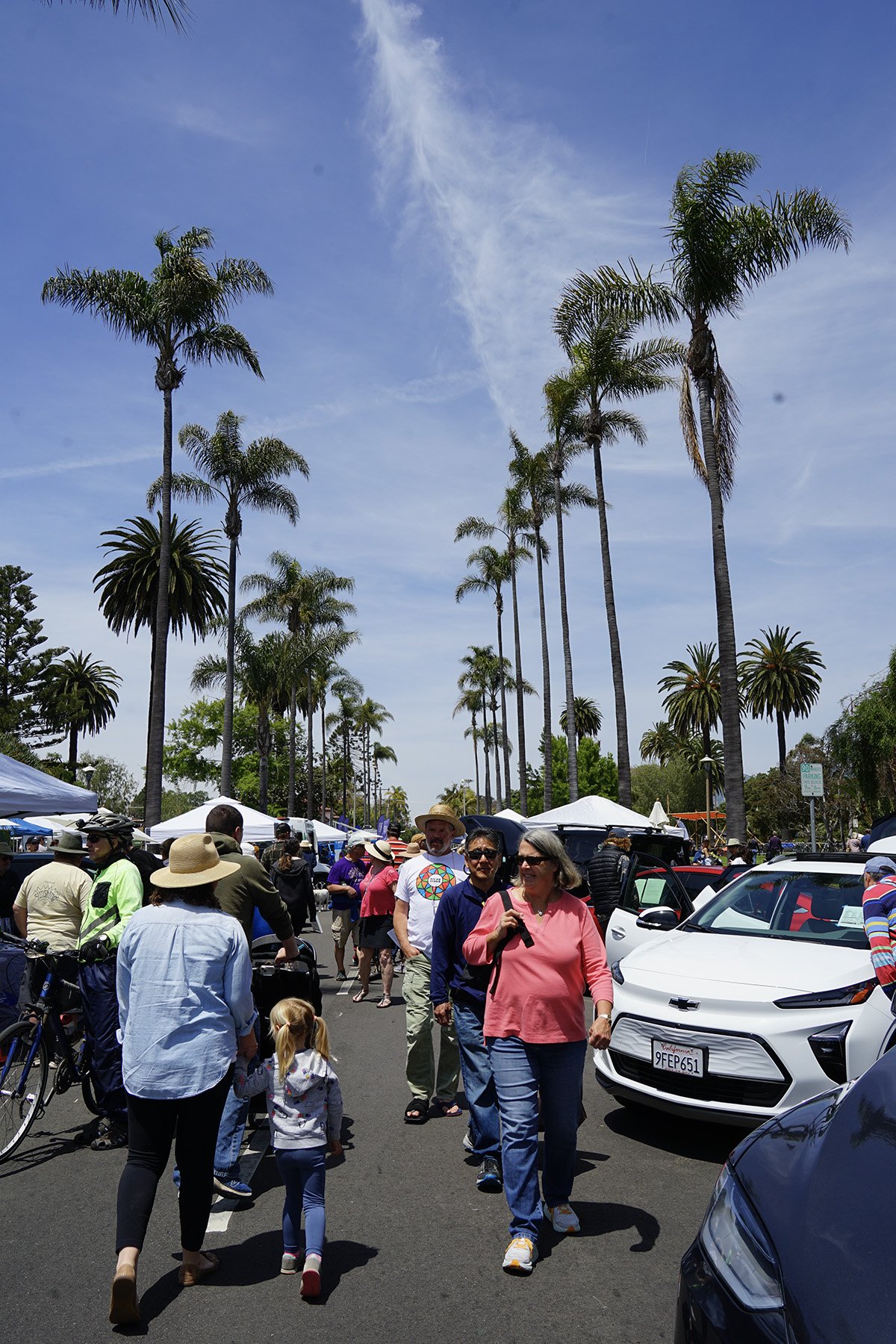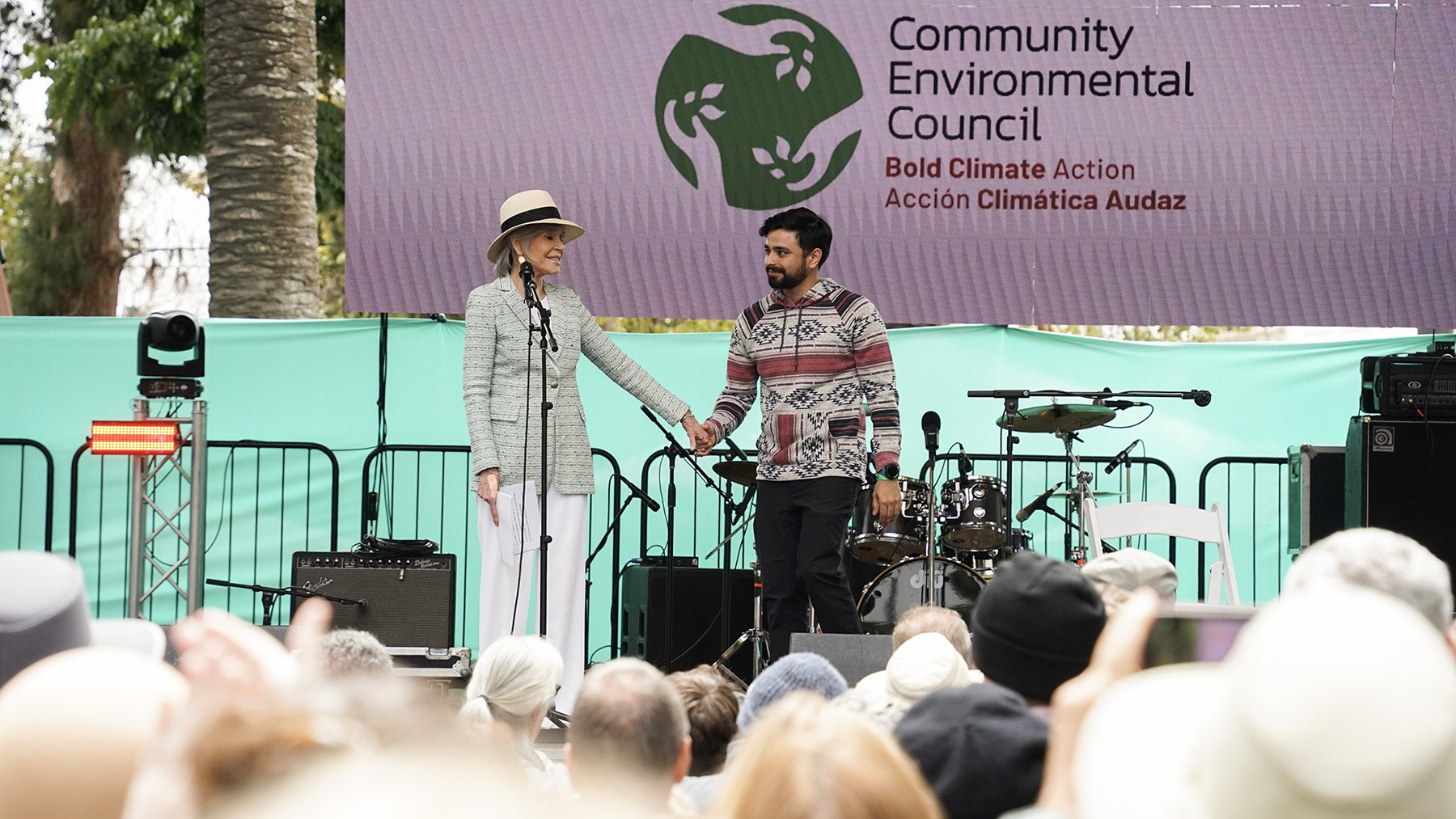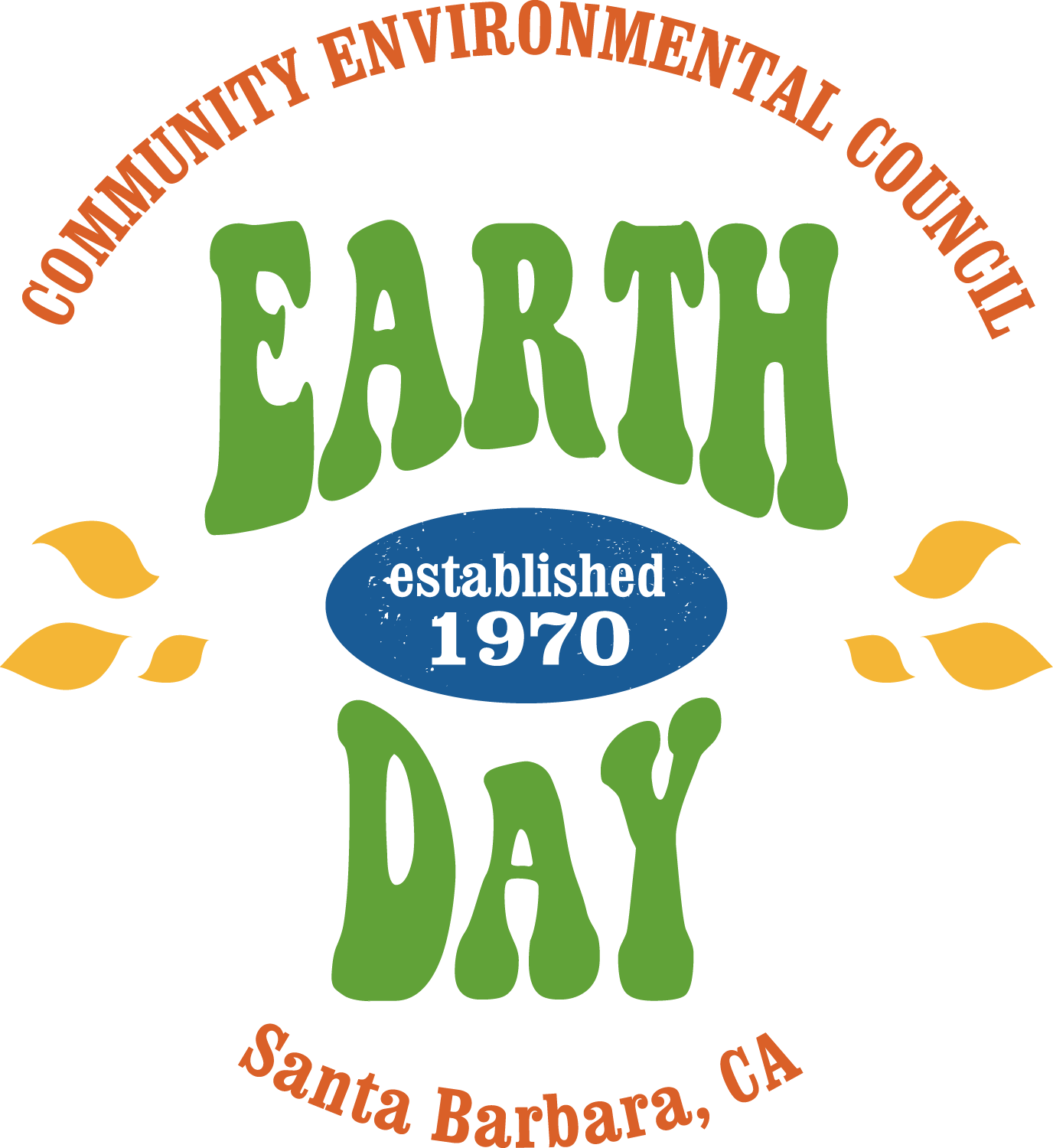
Santa Barbara’s Earth Day Celebration Over the Years
A massive oil spill from a platform off Santa Barbara’s coastline in 1969 gave rise to the first national Earth Day celebration held on April 22, 1970. The community-led event was spearheaded by the Community Environmental Council, a grassroots organization that was just taking root. Read on to learn how Santa Barbara’s Earth Day celebration has evolved over the years, continuing to gather community around the environmental needs of the day.
They created a non-profit organization called the Community Environmental Council (CEC), and their first action was to organize a Santa Barbara Earth Day event.
1970
The story of Earth Day Festivals can’t be told without the 1969 Santa Barbara oil spill – when three million gallons of leaked oil devastated wildlife along our coastline. This catastrophic event - then the largest oil spill to date (the third-largest currently) – happened during a time of rising concerns about the environment. Pollution and disappearing wildlife were on the rise, and people were starting to notice.
Senator Gaylord Nelson and Denis Hayes visited the scene of the Santa Barbara oil spill and were struck by the wreckage. They realized – as did many others at the time – that swift environmental action was needed. Soon after, they made a national call for people to put together environment “teach-ins” — similar to the anti-war teach-ins of the day — to elevate the importance of protecting our planet.
Here in Santa Barbara, a group of energized young adults with a bunch of books, a small office on Anapamu Street, and a desire to protect the environment heard Nelson and Hayes’ call. They created a non-profit organization called the Community Environmental Council (CEC), and their first action was to organize a Santa Barbara Earth Day event.
CEC organized environmentally-aligned community members and businesses to set up booths on the street and made Santa Barbara’s first Earth Day Festival. It was “a modest affair,” according to former CEC Executive Director Paul Relis, but it was the start of something big.
Resource: How an Oil Spill Inspired the First Earth Day, Smithsonian Magazine
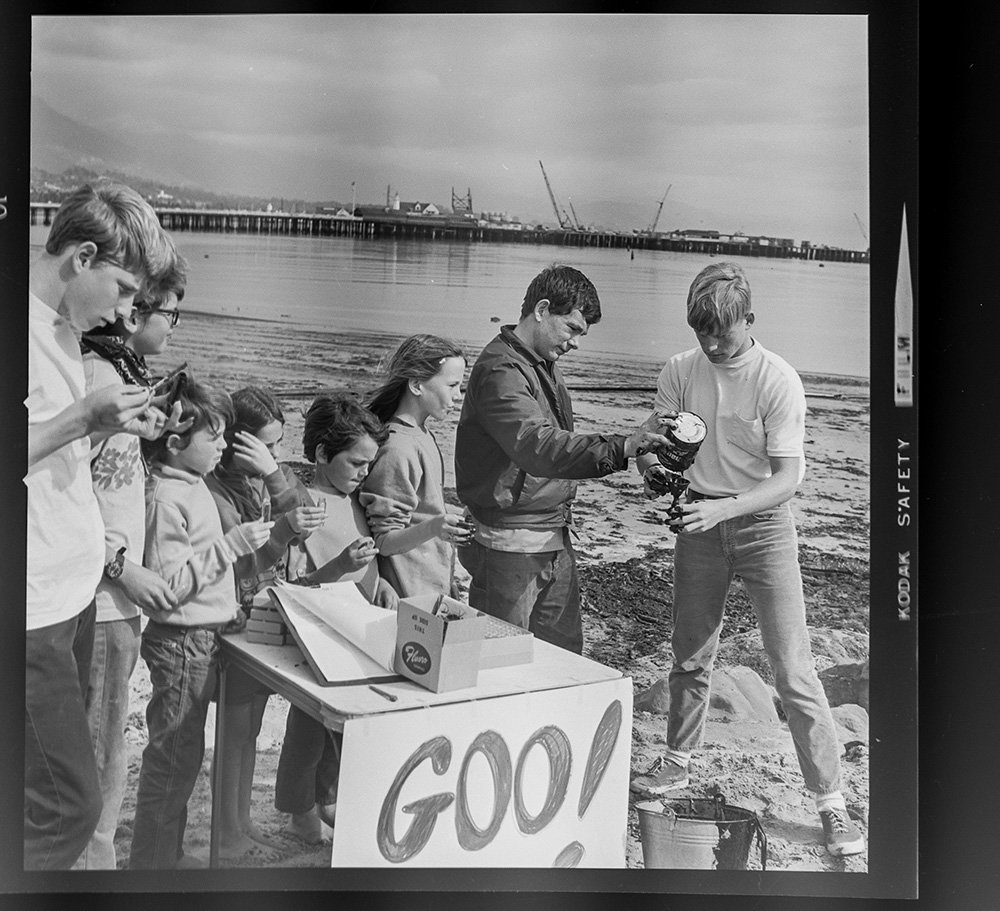
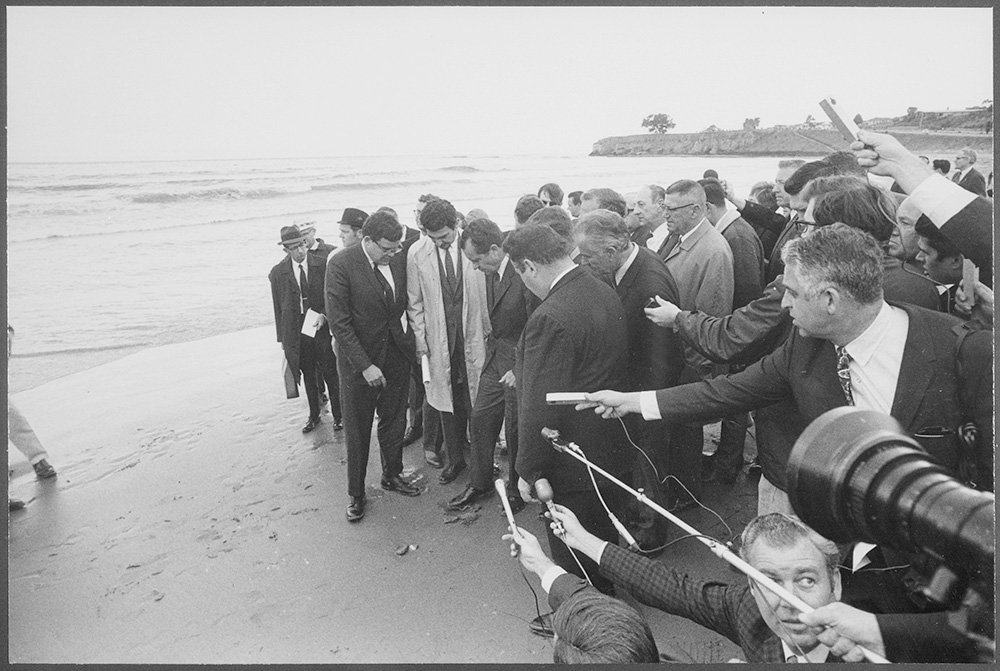
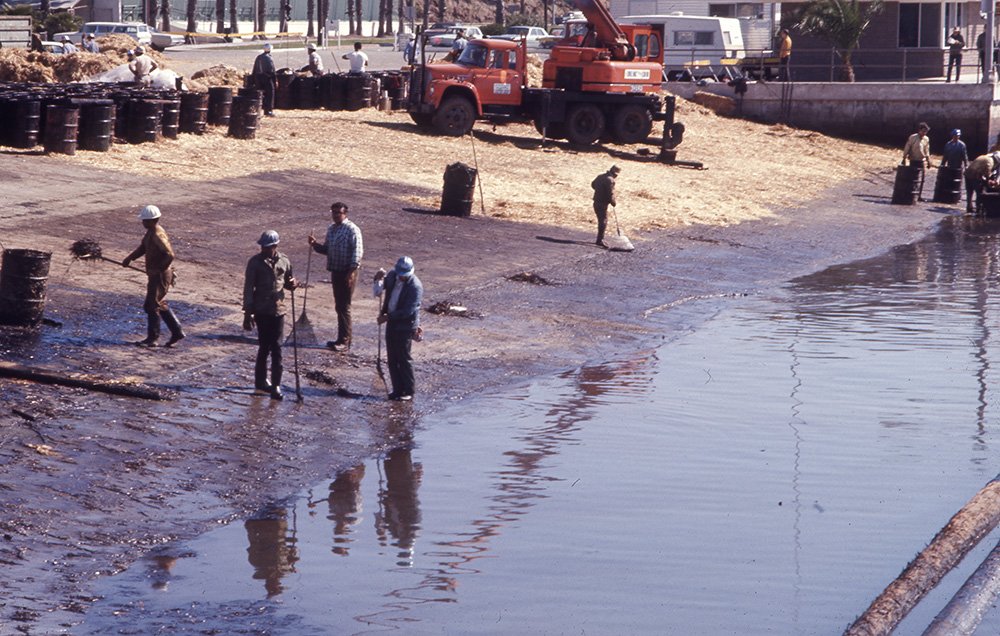
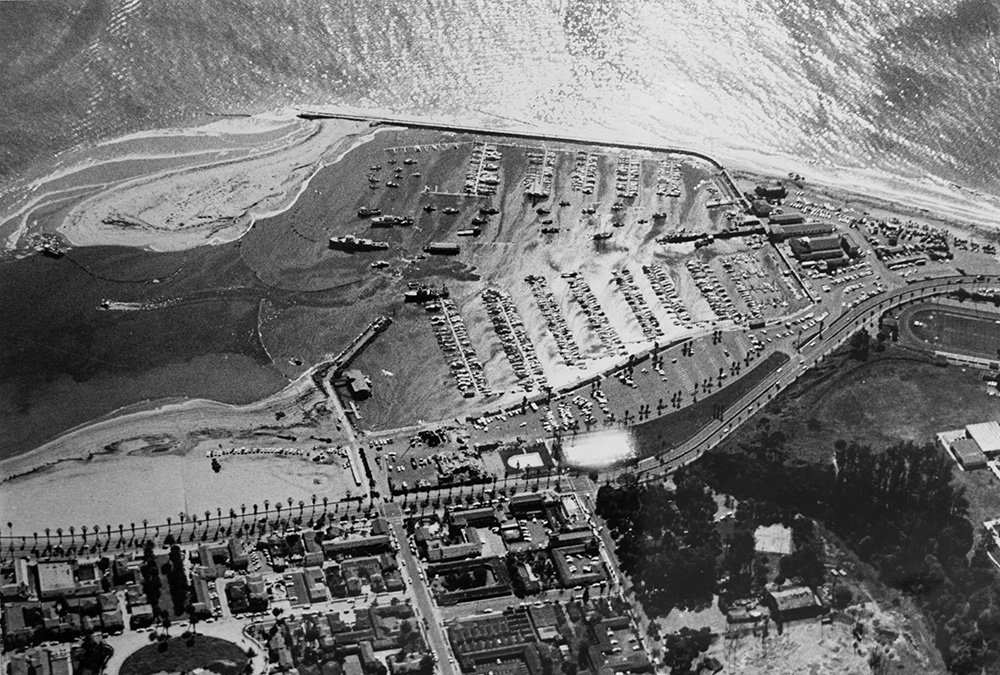
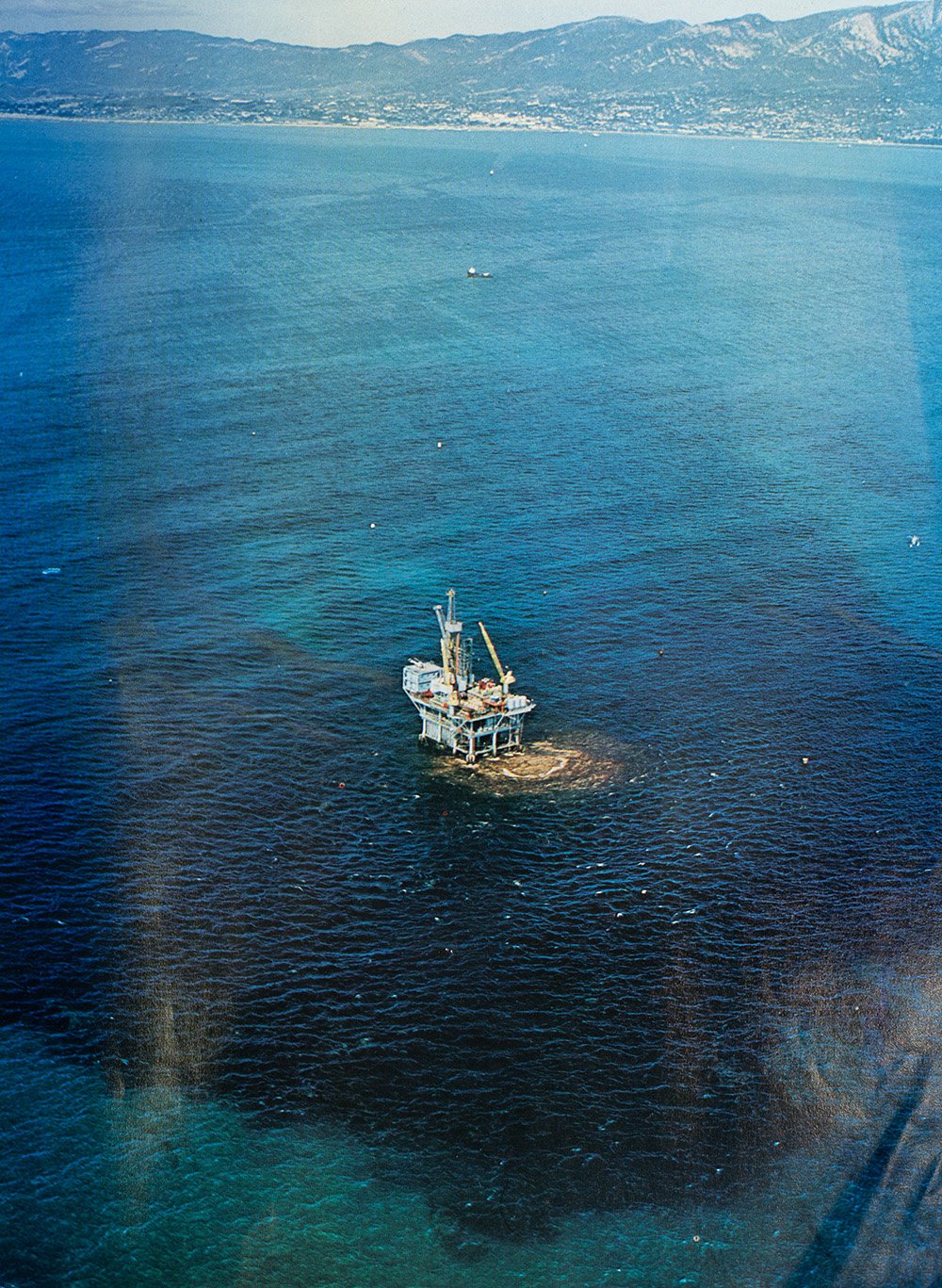
1970s
1980s
The 1970 Santa Barbara Earth Day Festival planted a seed of local environmental action. Although we have no record of Earth Day Festivals between 1971 and 1989, the community worked hard to help environmental progress blossom throughout California’s Central Coast. CEC would go on to build Santa Barbara’s first community gardens in the 1970s and advocate for recycling and household waste programs in the 1980s.
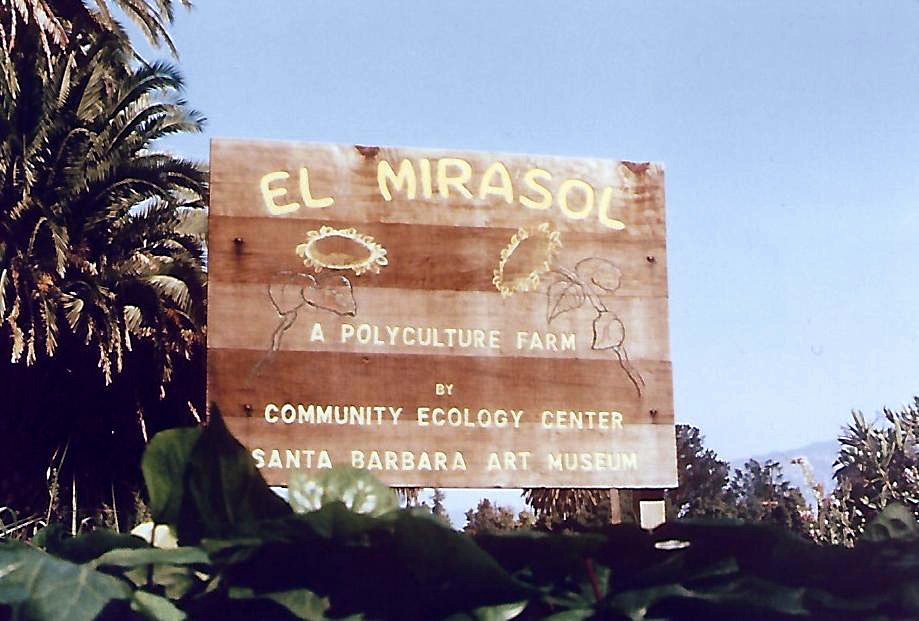



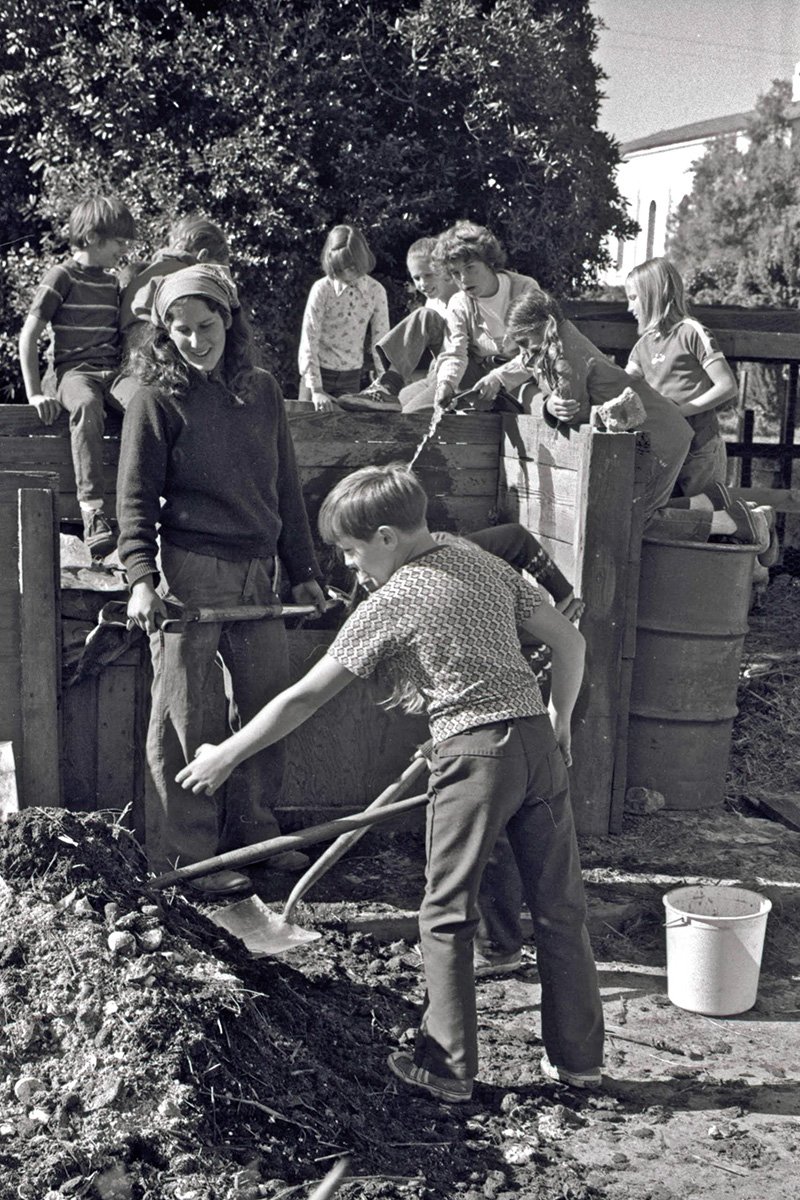

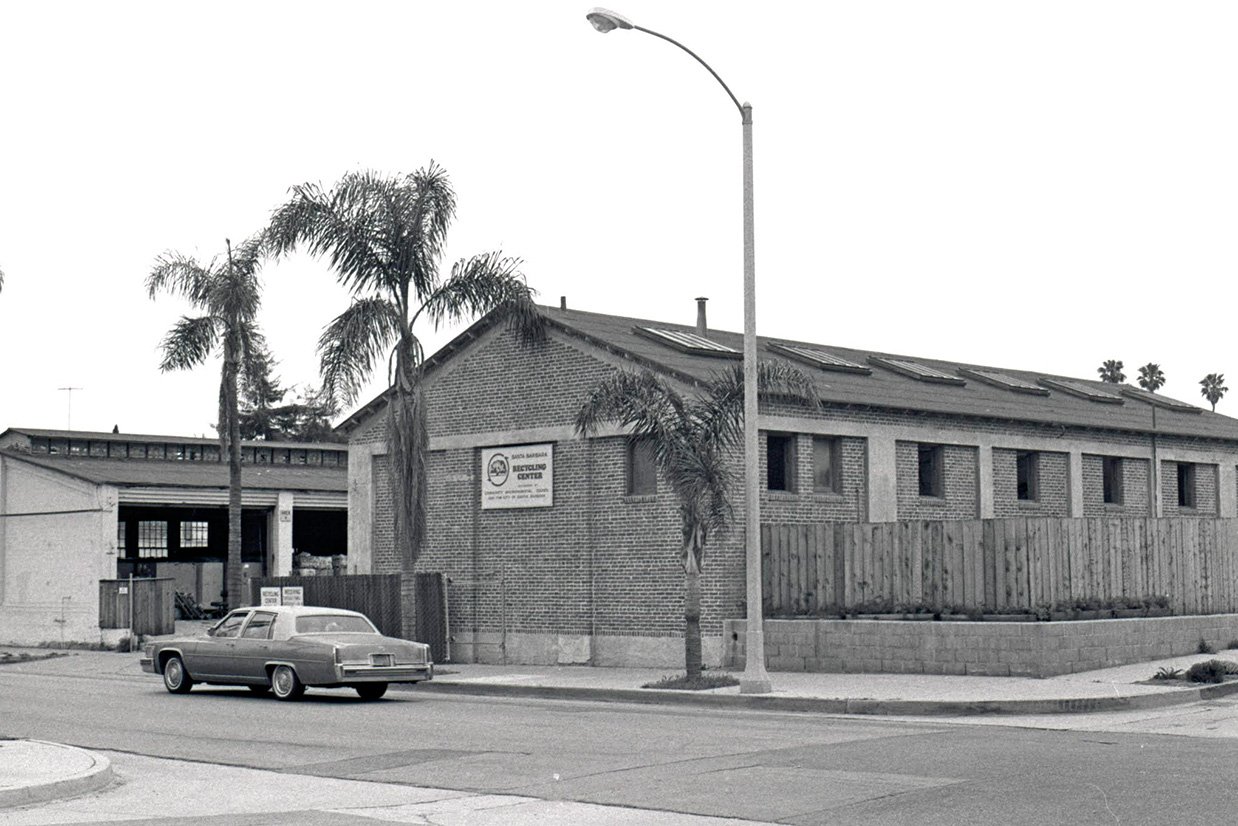
1990
After having lain dormant for almost twenty years, the Santa Barbara Earth Day celebration was ready to emerge into a new era. Karen Feeney, then the head of CEC’s Pollution Prevention program, attended a national conference in Washington D.C. Dennis Hayes spoke at the event and echoed the national call for Earth Day events that he and Senator Gaylord Nelson had two decades earlier. This time, he challenged the crowd to make “Earth Day every day” to bring environmental issues and action out from the shadows and back into the sunlight.
Karen left the conference inspired and invigorated, returning with a vision to bring the Santa Barbara Earth Day Festival back – bigger, bolder, and refreshed. Karen and fellow colleague Sharyn Main gathered their CEC staff and board members, other local environmental organizations, and environmental activists to join together to form the Santa Barbara Earth Day Committee. Together, the Committee grew the modest street fair of 1970 into a large-scale community event.
Held at Santa Barbara City College, headlining musicians of the day Jackson Browne, Kenny Loggins, Jim Messina, and others graced the mainstage. Environmental leaders and politicians, including Senator Gary K. Hart spoke to the animated crowd about concerns for the planet. Over 120 booths offering information and actions to take to protect our global ecosystem rounded out the experience. Although the event set a festival scene, the music, speeches, and environmental organizations resounded messages of concern about pollution, deforestation, and species decline. It was both a huge celebration and a concerted push for more environmental action that would set the tone for years to come.
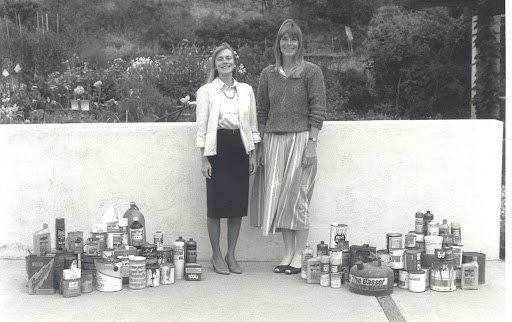
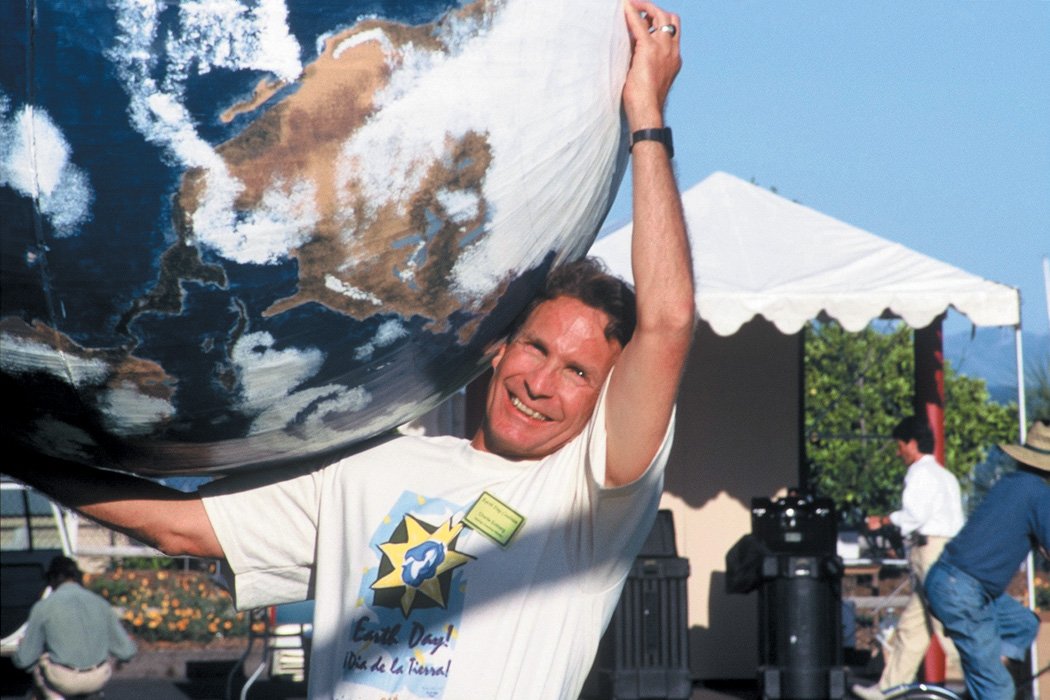
1991
-1994
The Santa Barbara Earth Day Committee had their hands full building local environmental change. Instead of putting on large-scale festivals during these years, they held small gatherings in different locations around Santa Barbara, including in De La Guerra Plaza just off of State Street.
1995
It was the 25th Anniversary of the first Earth Day celebration, and the Santa Barbara Earth Day Committee came back together to put on another massive Earth Day Festival. In many ways, it recreated the 1990 event; it was held at Santa Barbara City College, featured big music performances, centered on rousing environmental speeches, and assembled many community organizations. Youth voices and kids’ activities were included for the first time.
1998
-1999
In 1996, the Earth Day Committee phased as the entity that organized the event, and CEC stepped in. CEC experimented with holding the event on State Street and Anapamu Street in front of the Museum of Art and Library. The festival featured a traveling educational exhibit called Garbage and All That Trash.
In the years 1997-1999, the one-day festival moved back to De La Guerra Plaza with about 100 exhibitor booths, live music, and food vendors.
2000
As we celebrated the 30th Earth Day Festival Anniversary and a new millennium, we also welcomed a grander Santa Barbara Earth Day Festival. The huge community gathering was situated on Santa Barbara City College’s West Campus lawn. The Santa Barbara Bowl partnered with CEC and built a giant stage for performances and speakers, including Singer Kenny Loggins, Jackson Browne, Big Bad Voodoo Daddy, Dishwalla, and James Cameron.
It was the first Santa Barbara Green Car Show that featured a single Honda Insight, which a local Santa Barbarian proudly showed off and allowed people to test drive. Homemade biodiesel made of would-be discarded bacon grease was also on display as a non-extractive fuel substitute. At the time, these advancements were groundbreaking and set a foundation for the explosion of low-carbon transportation options that would follow.
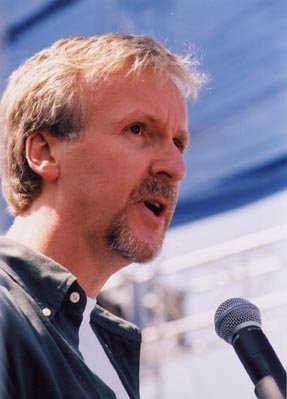
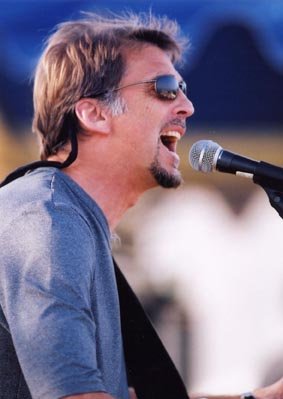
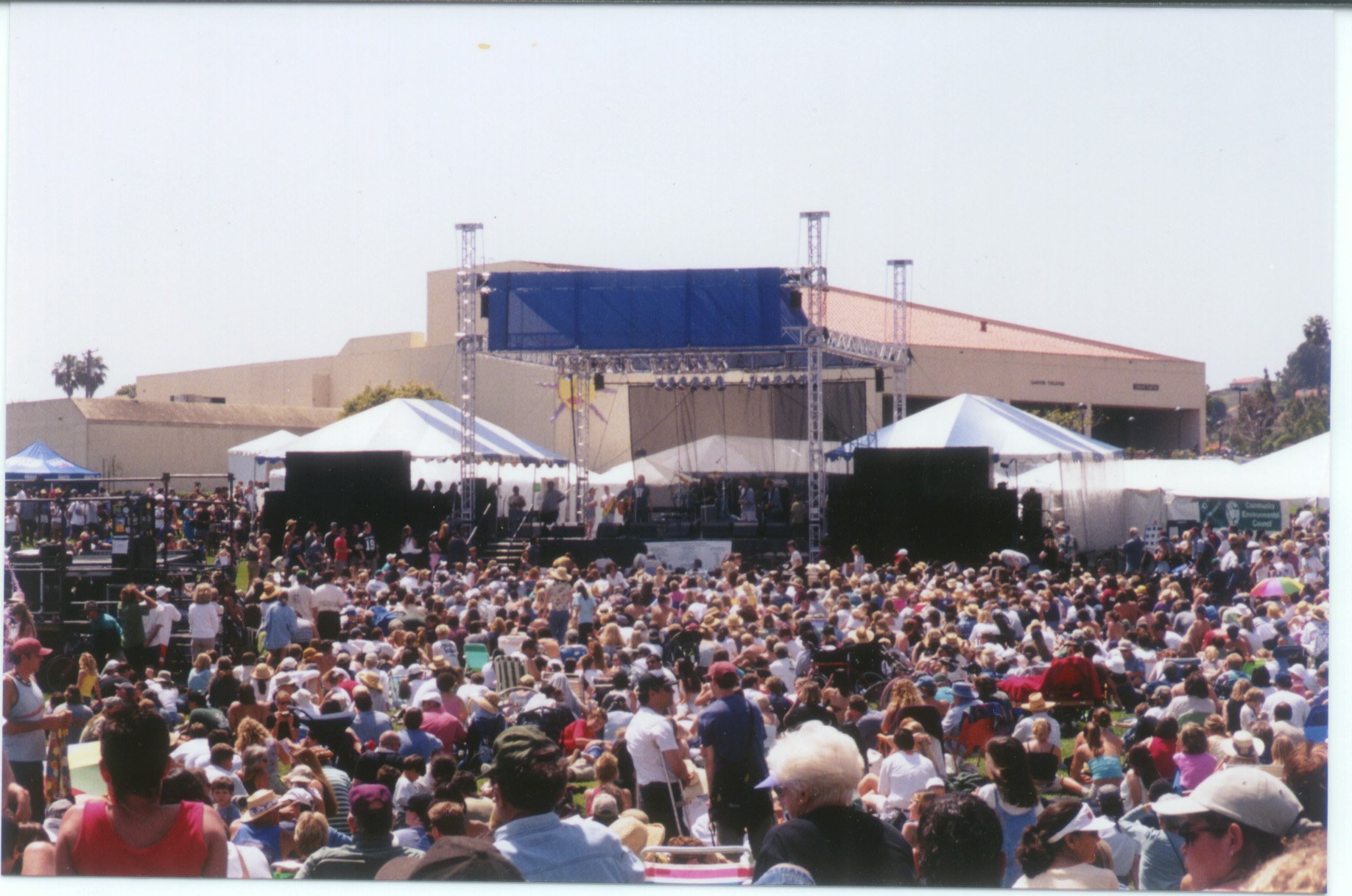
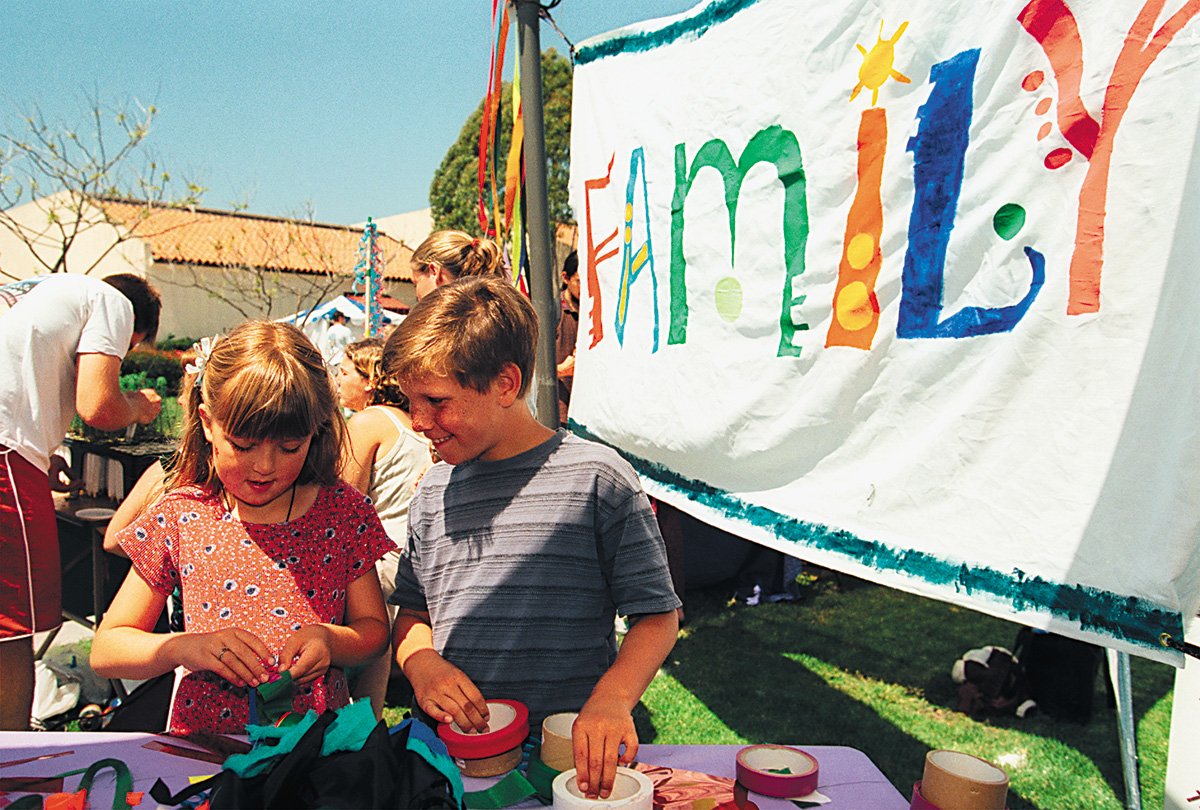
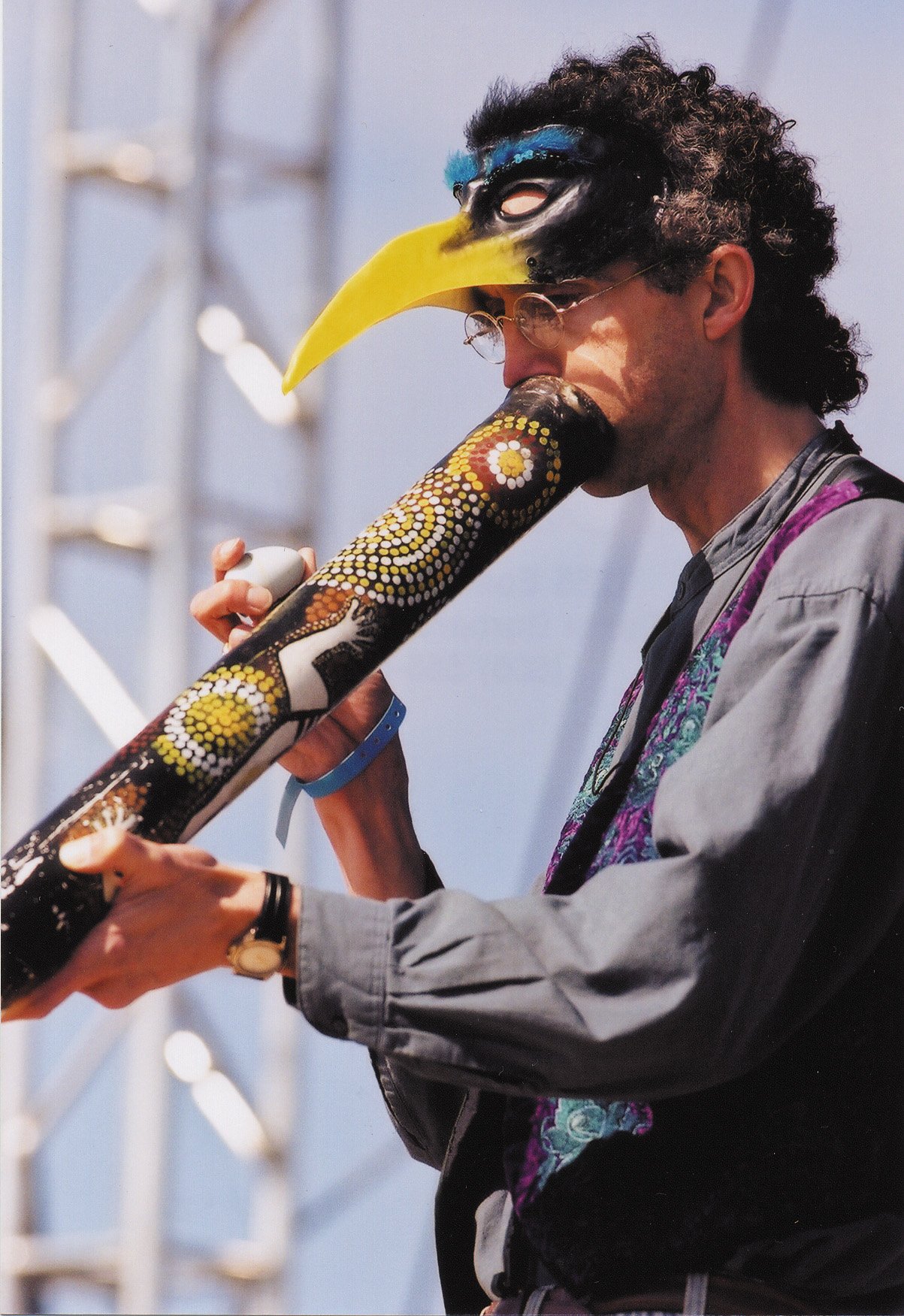
2001
-2008
In 2001, the festival moved from Santa Barbara City College to the Sunken Gardens of the iconic Santa Barbara Courthouse.
These years, the festival continued to grow and become a staple community event. As electric vehicles became more widely available, the popularity and size of the Green Car Show grew. The festival continued to attract popular musicians, including Santa Barbara locals Jack Johnson and Glen Phillips of Toad the Wet Sprocket, who brought their lyrical messages of environmental action to the main stage.
Community partnerships sprung up, as well. In 2007,the UC Santa Barbara Library’s UCSB Reads program shared a selection from Elizabeth Kolbert’s “Field Notes from a Catastrophe: Man, Nature, and Climate Change” about global warming. CEC also worked with the UC Santa Barbara Bren School to bring an exhibit of images from the Arctic by a local photographer. Flags with the Arctic images hung along State Street as snow fell on the mountains behind them (an unusual climatic phenomenon!).
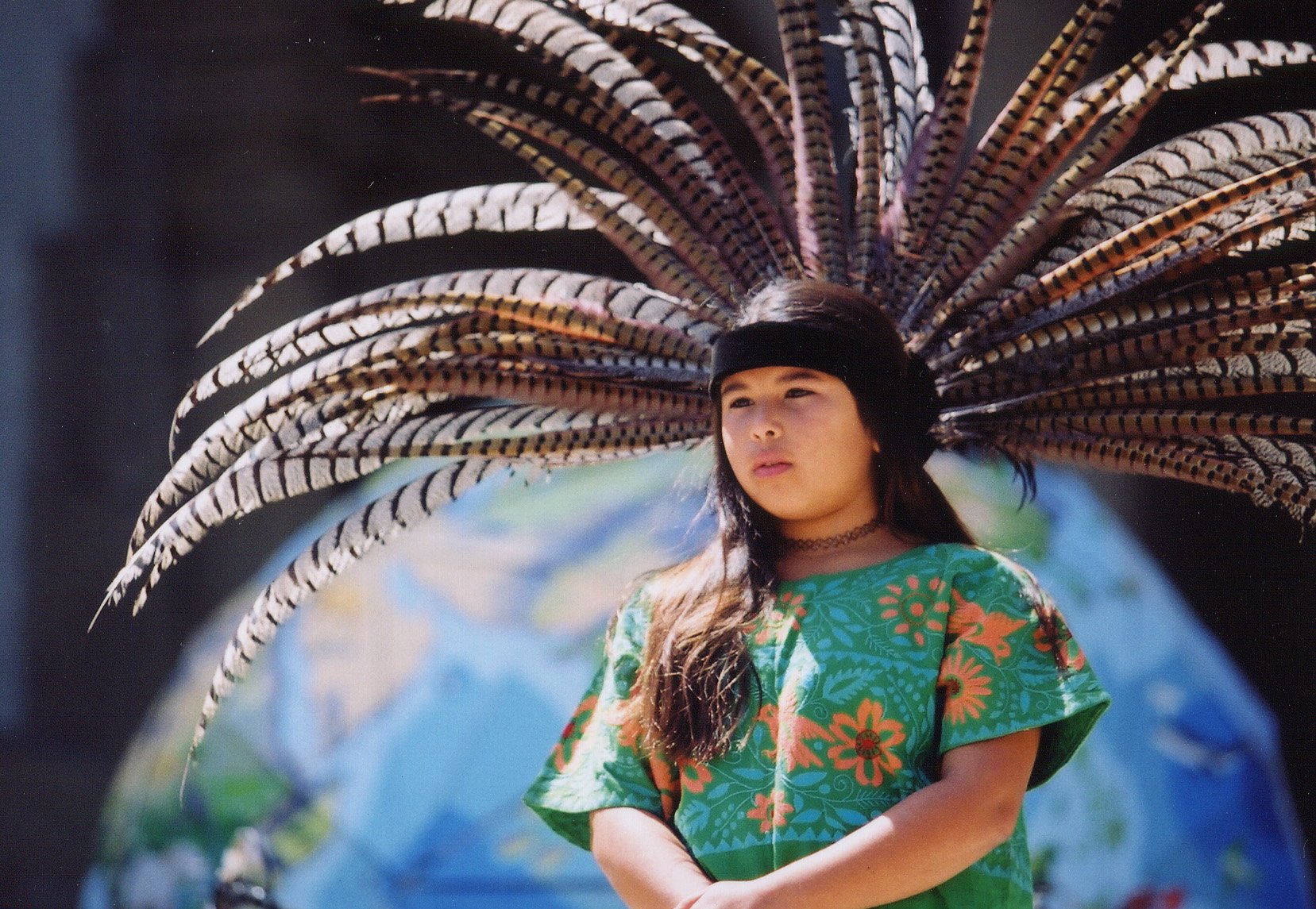
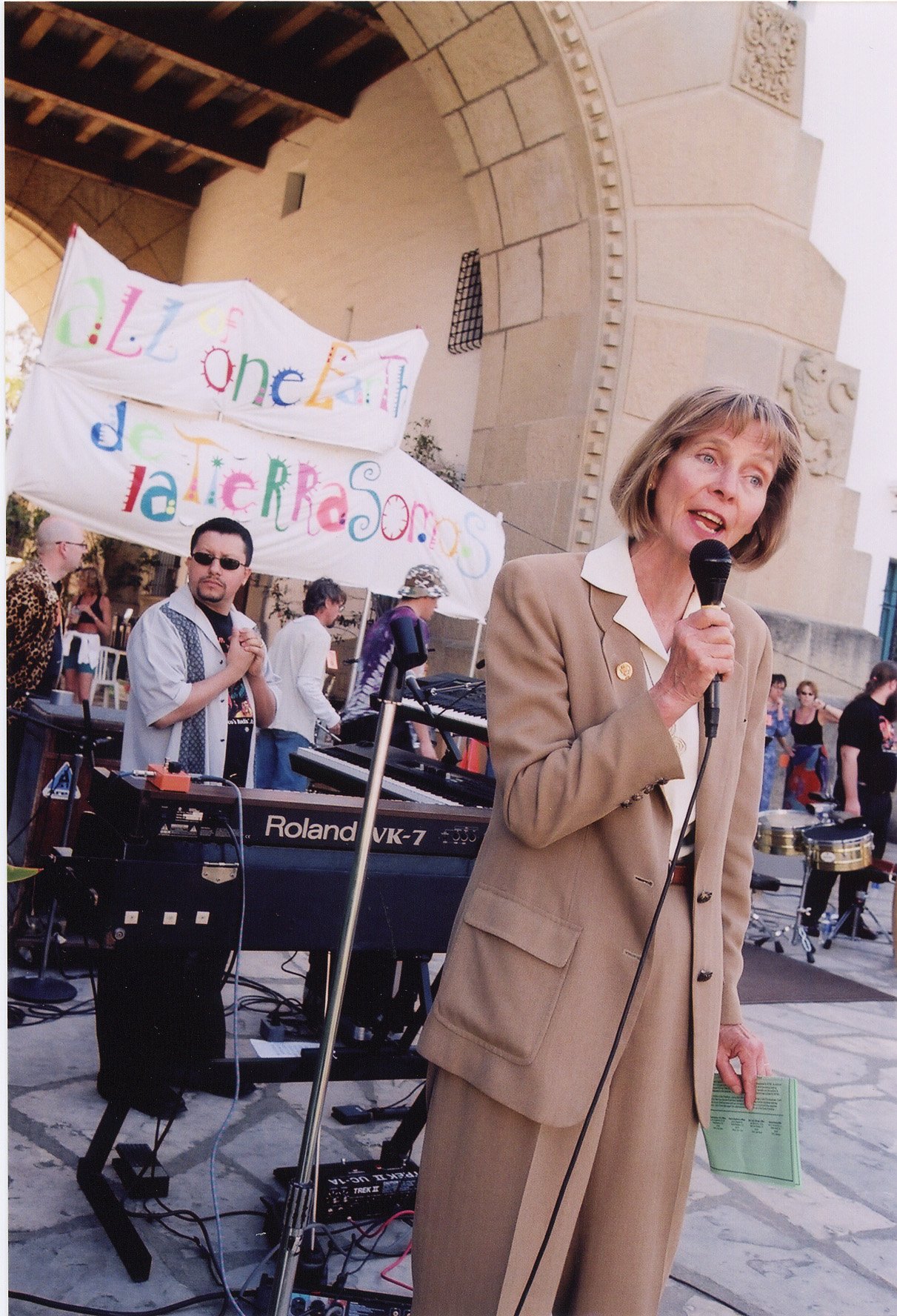
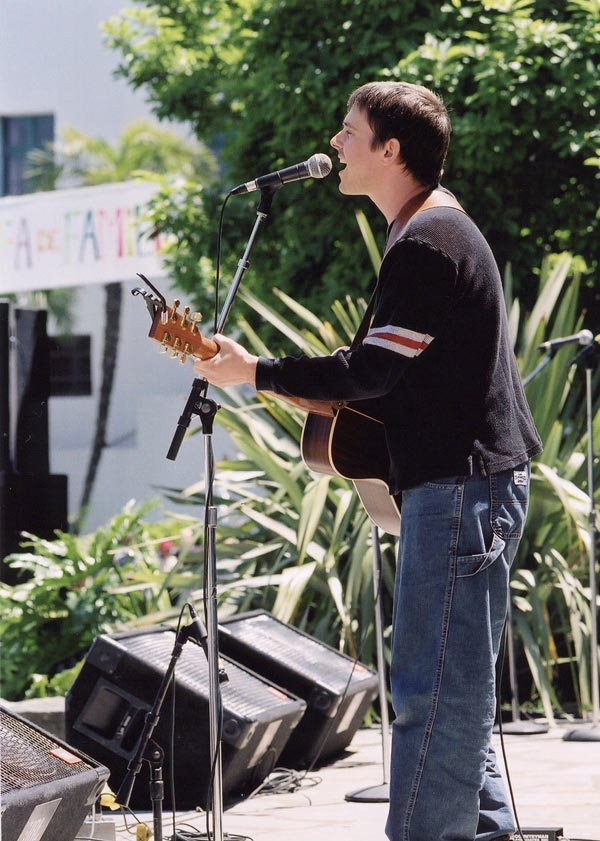
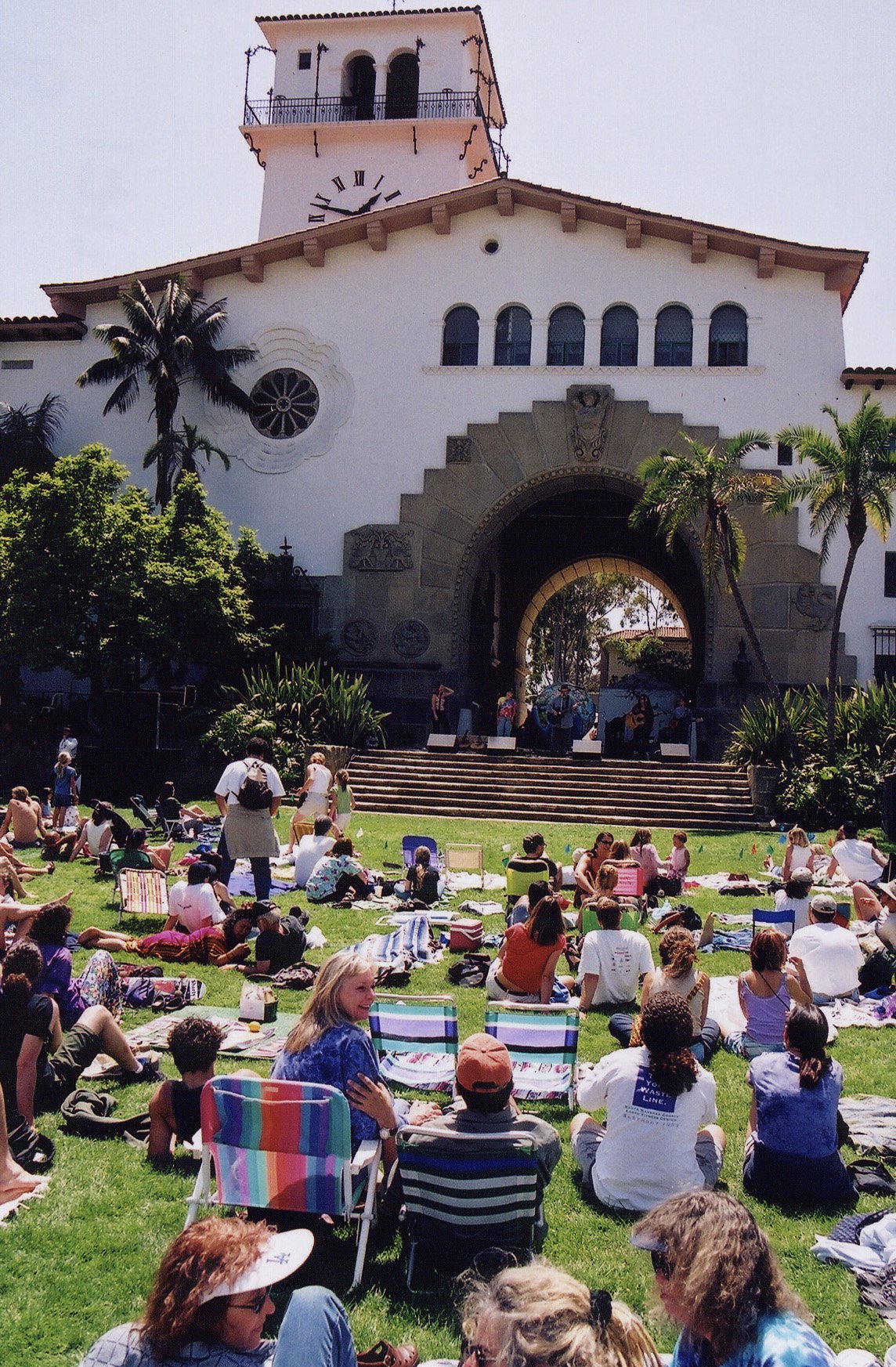
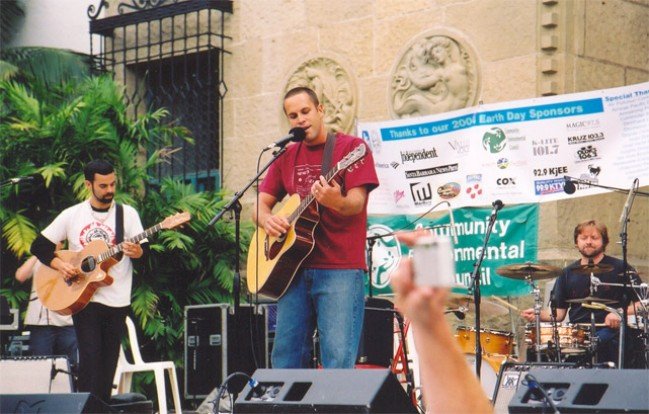
2009
-2019
Another wave of change rippled throughout the Santa Barbara Earth Day Festival during this period. 2009 marked the beginning of the Environmental Hero Award, an annual award granted to an individual or organization who has made significant contributions to the environmental movement. Inspiring Environmental Heroes were honored during each festival, from Actress and Activist Daryl Hannah (2011), to Environmental Justice Advocate Van Jones (2013), to 350.org Founder Bill McKibben (2015), and Author Suzy Amis Cameron (2019).
During these years, a common theme emerged and crystallized: the climate crisis. Solutions offered by exhibitors and speakers emphasized both the systemic and individual actions needed to reverse climate change and bring about a more climate-resilient future.
The event attracted people from all over the California Central Coast to celebrate, learn, and take action together. The historic Sunken Gardens could no longer contain the celebration, and the festival moved a few blocks over to the more spacious Alameda Park in 2009.
The move was so successful for the event, that the following year, an additional day was added to make it a full weekend celebration. Over the next nine years, festival attendance continued to grow and the footprint of the event expanded from one square-block of Alameda Park to include Santa Barbara Street between Micheltorena and Sola Streets and a portion of the second block of the park.
In 2010, local food system advocates developed the first harvest-to-home section of the festival, highlighting local food and farming organizations. Over the next few years, the food court was reimagined to include vendors who source locally grown, climate-friendly foods and the harvest-to-home section was established as the Homegrown Roots Zone. In 2014, a 150-person farm-to-table dinner was set up in front of the main stage on Saturday night to celebrate local food producers and the role they play in the health of our planet.
In 2017, 5,000 people marched through the streets of Santa Barbara in the March for Science to encourage decision makers to listen to scientists, in particular about the climate crisis. The march culminated at the Earth Day event, where marchers hung their signs on a big wall for all to see.
By 2019, the festival had reached new heights. A special Friday night concert was held in addition to the weekend of back-to-back musical performances, The Green Car Show became one of the largest on the West Coast, and the park held more than 200 exhibitors. That year, about 35,000 environmentally conscious individuals attended the Santa Barbara Earth Day Festival.
Resource: 2019 festival guide
Resource: Santa Barbara Marches for Science, Santa Barbara Independent
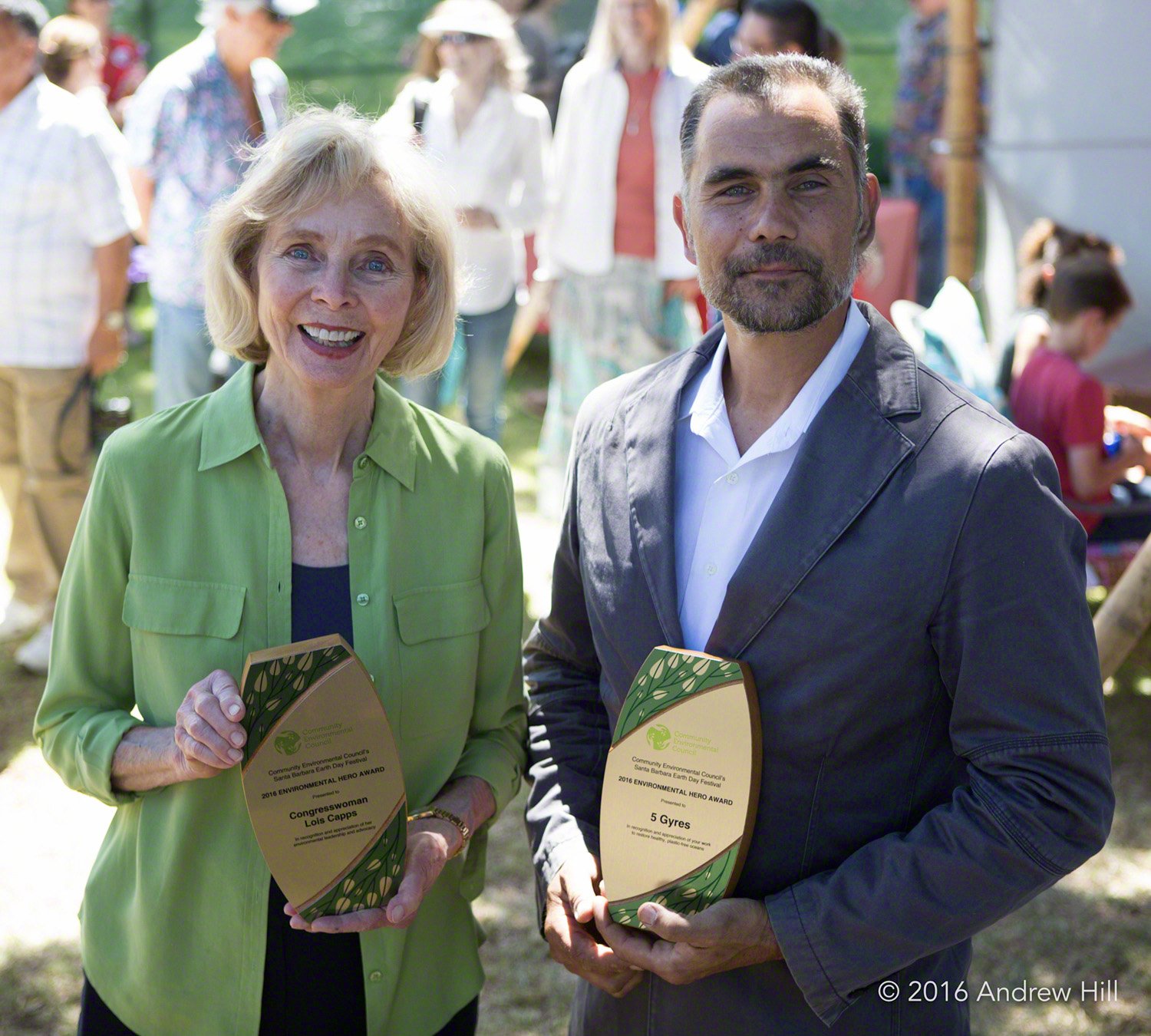
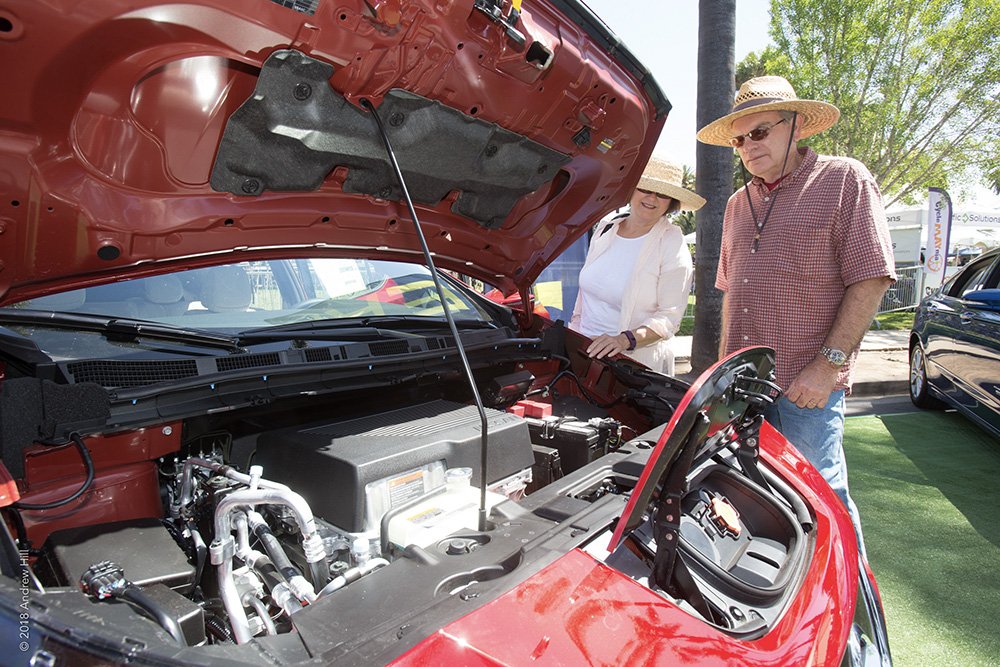
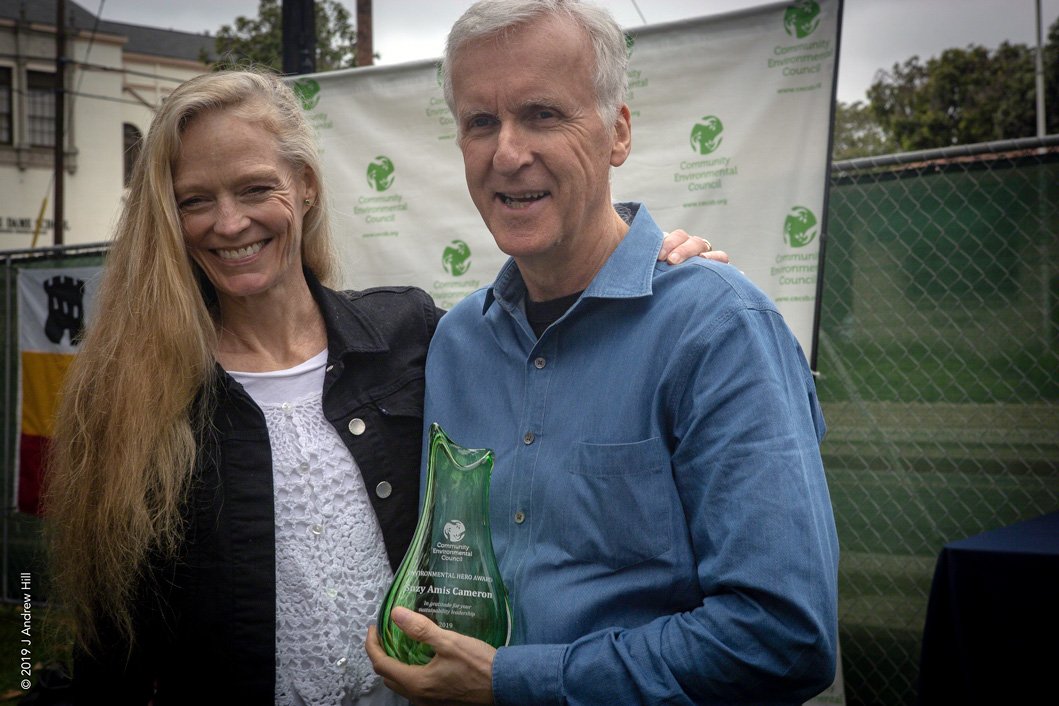
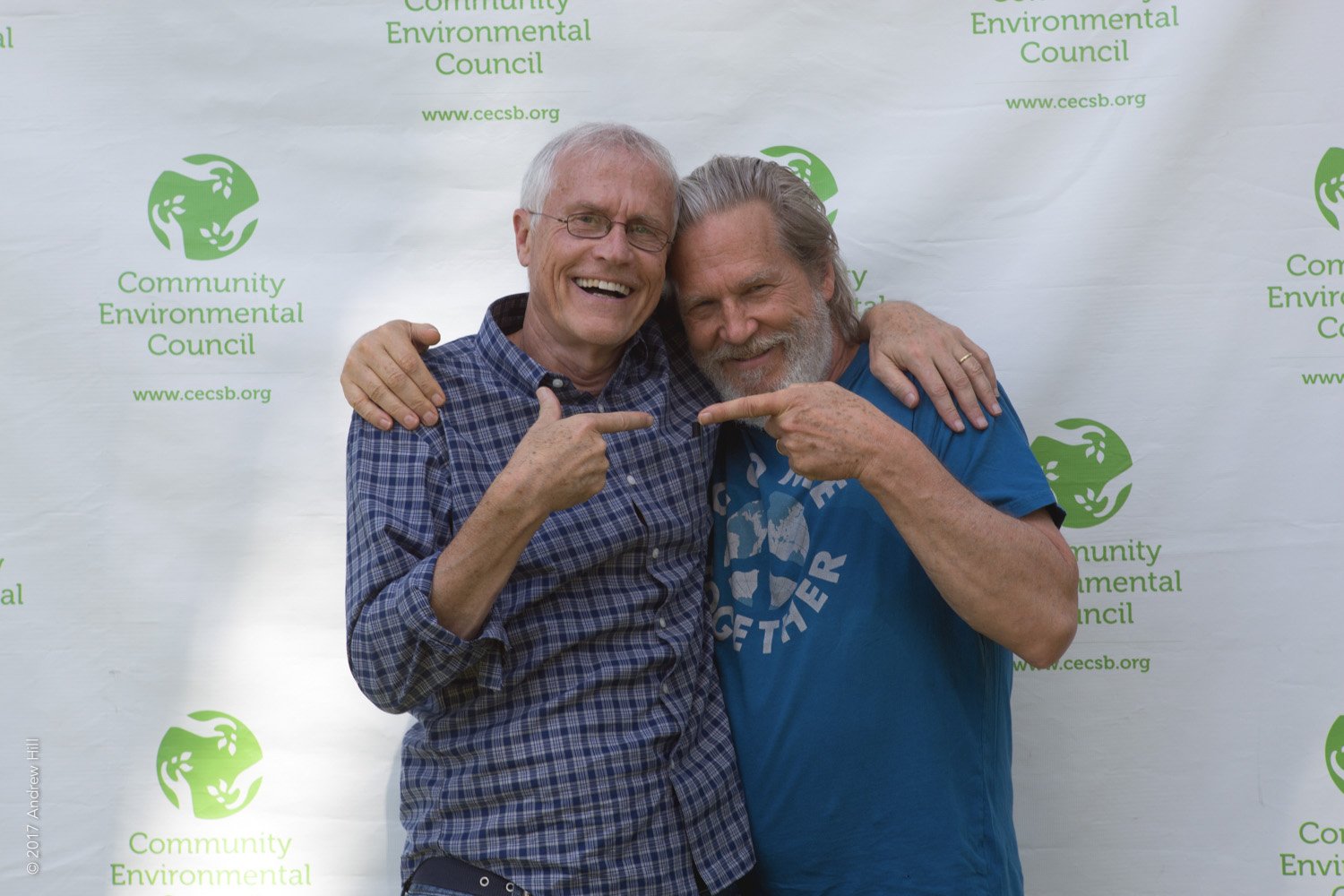
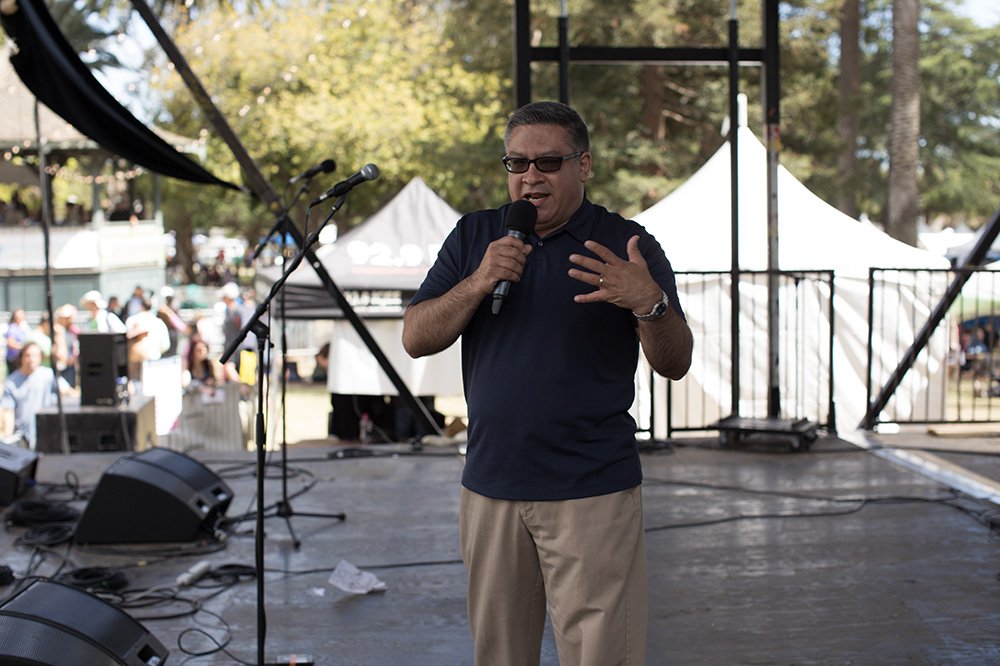
2020
-2021
The COVID-19 pandemic affected the world in profound ways, including how environmental activists show up in community with one another.
In 2020, thousands of people from all over the world tuned in to a virtual Santa Barbara Earth Day Festival celebrate environmental action and lifted up the work that still needed to be done. Actress Julia Louis-Dreyfus, Actor Jeff Bridges, and Former Vice President Al Gore inspired attendees with messages of hope about the future of the planet. Although the world was facing a crisis we did not yet fully understand the impacts of, the climate crisis was garnering more attention and we were seeing in real-time the positive effects of our reduced impact on the environment.
The following year, nearly 10,000 tuned into the live streamed event that highlighted the theme of climate leadership. Responding to the need for leaders, youth, and to connect and collaborate on climate action, the Climate Leadership Summit gathered climate activists and social change agents to share their work, circulate ideas, and accelerate progress. The community also recognized the power of art-based activism, and CEC, The Arts Fund, Museum of Contemporary Art Santa Barbara, Paseo Nuevo, and Santa Barbara BCycle sponsored an Earth Day Mural installation to highlight the elements of our natural system important to our community. Adriana Arriaga and Claudia Borfiga created “Nurture our Mother”, a bright pop art mural with images of 805 nature that highlight the interconnectedness of our shared ecosystem and pays homage to Arriaga’s Xicana identity.
2022
In 2022, the festival returned in-person as a one-day event at the historic Arlington Theatre. Speakers took the stage, climate-centric films were screened, and the community gathered again to reconnect around climate action. Dozens of local organizations set up booths in the theater’s courtyard, and the Green Car Show set up along State Street in front of the theater. To continue to push forward climate action on California’s Central Coast, the in-person Climate Leadership Summit gathered youth activists and seasoned climate leaders to advance solutions. CEC’s climate leadership was recognized during the event, as the CEC CEO Sigrid Wright was presented the Congressional Woman of the Year Award by U.S. Representative Salud Carbajal for her incredible work and positive impact in our region. To round out the event, another Earth Day Mural installation featured local artist Maria Arroyo’s depiction of a warrior bird that looks over native Central Coast flora and fauna.
Resource:Earth Day Mural 2022, MCASB
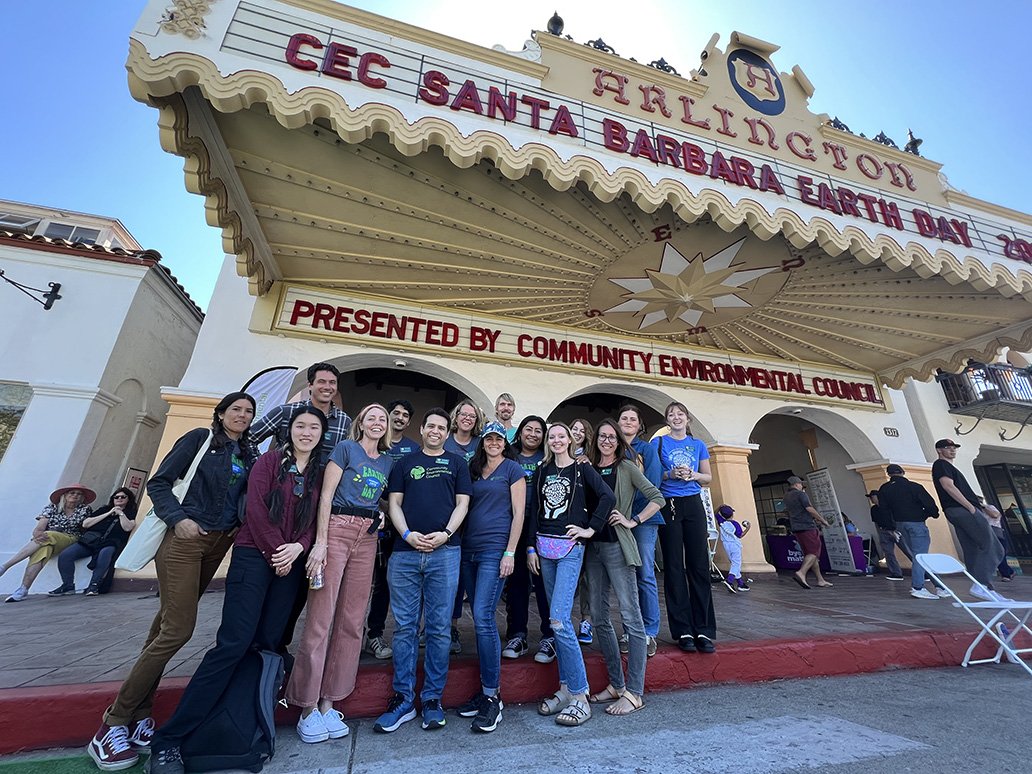
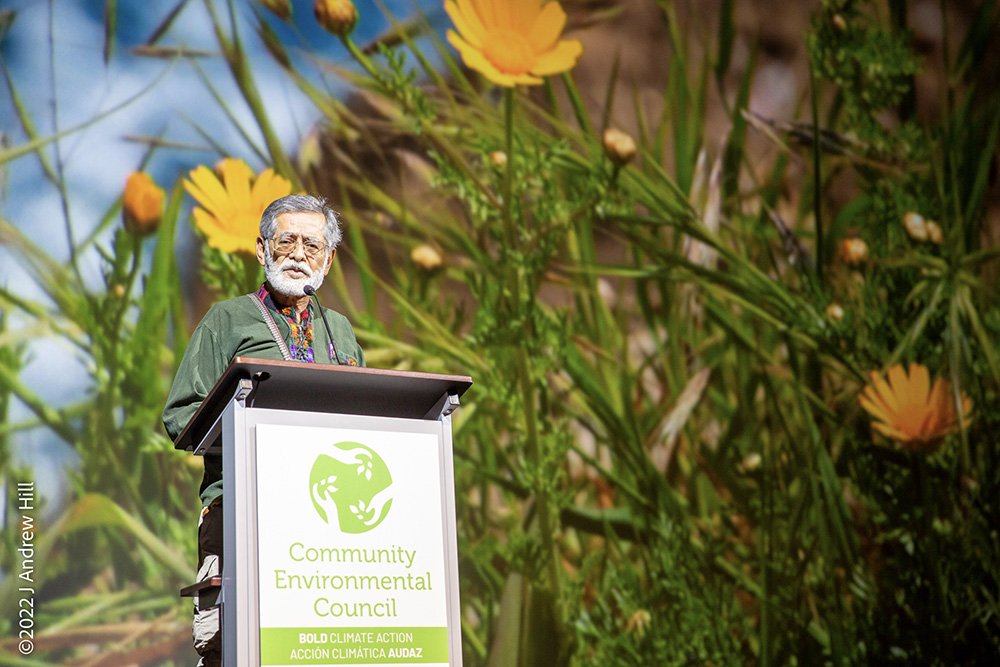
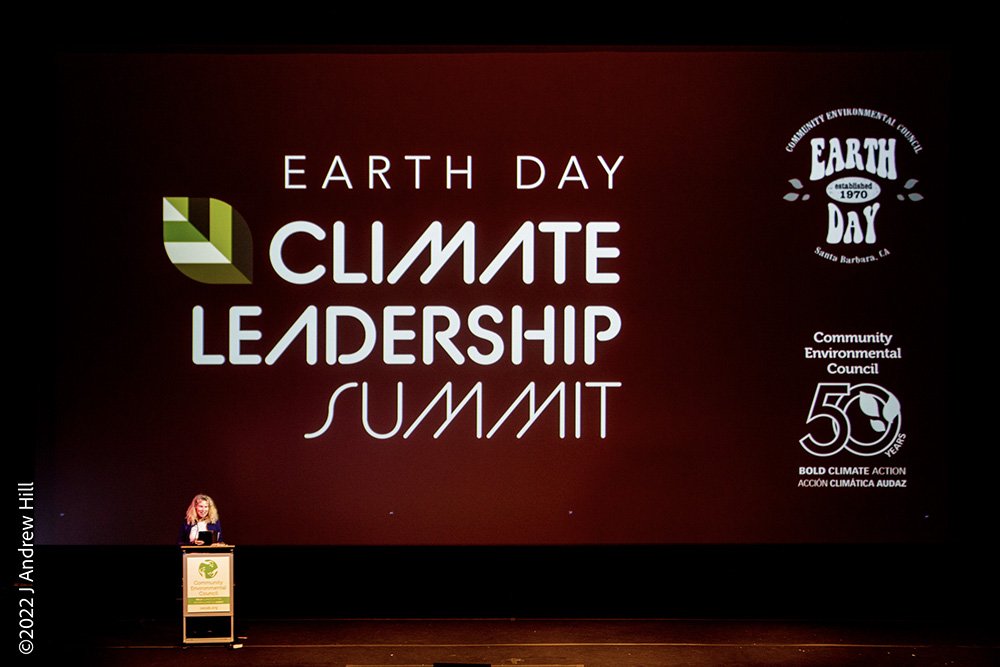
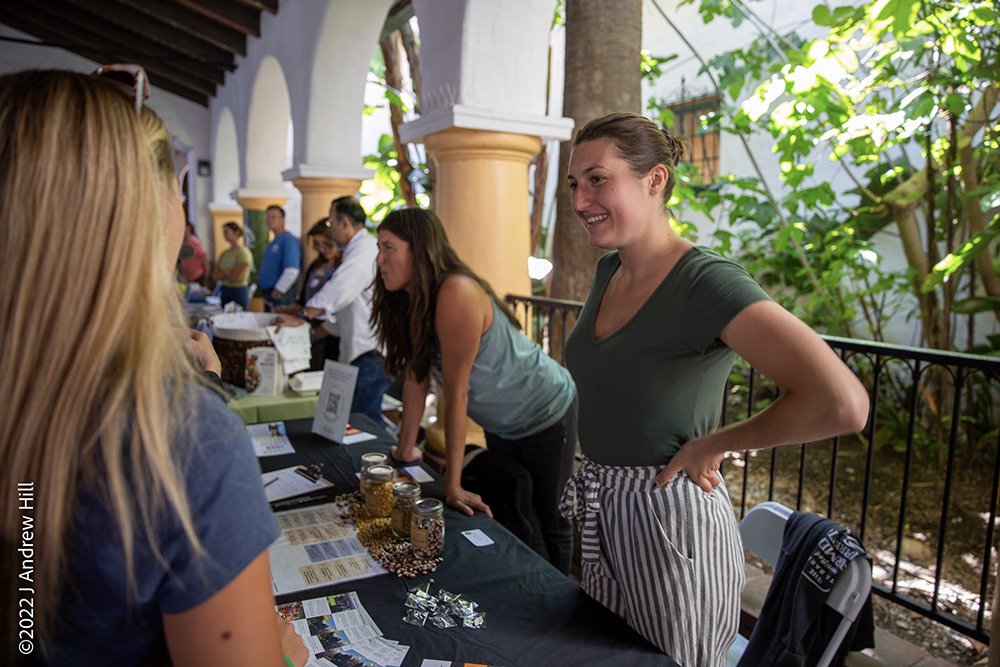
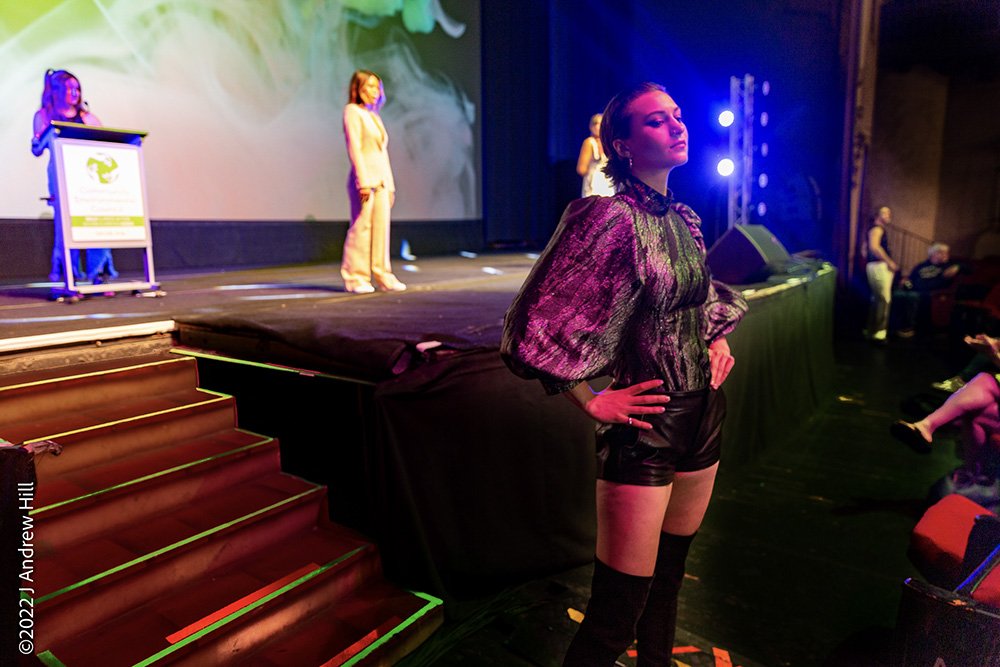

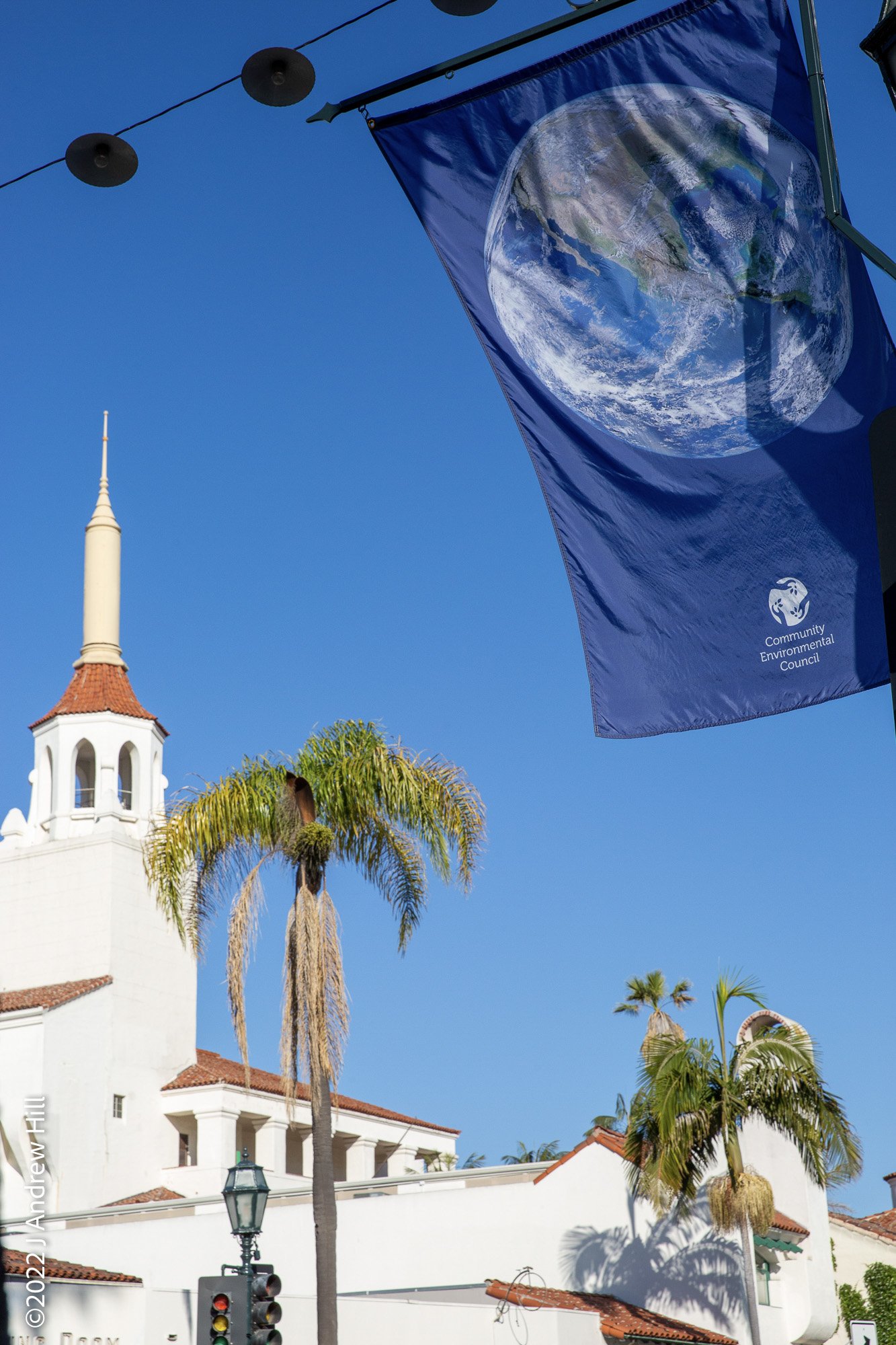
2023
In 2023, the Festival returned to Alameda Park with 22,000 attendees. A shared excitement to once again celebrate alongside fellow community members was palpable, as was the urgent call to increase intersectional climate and social justice action. The need to equitably reduce climate emissions and build Central Coast climate resilience was shown throughout the event.
The Climate Action Stage featured stirring presentations and discussions, including a presentation on the science and impacts of climate and a climate justice panel event that reflected on the kind of social movement needed for a world without fossil fuels. Actress and Activist Jane Fonda presented the Environmental Hero Awards to Nalleli Cobo, co-founder of People Not Pozos, and Cesar Aguirre, Oil and Gas Director for the Central California Environmental Justice Network and co-founder of California Youth vs. Big Oil.
Resource: Earth Day Festival Celebrates Environmental Causes With Return to Alameda Park, Noozhawk
